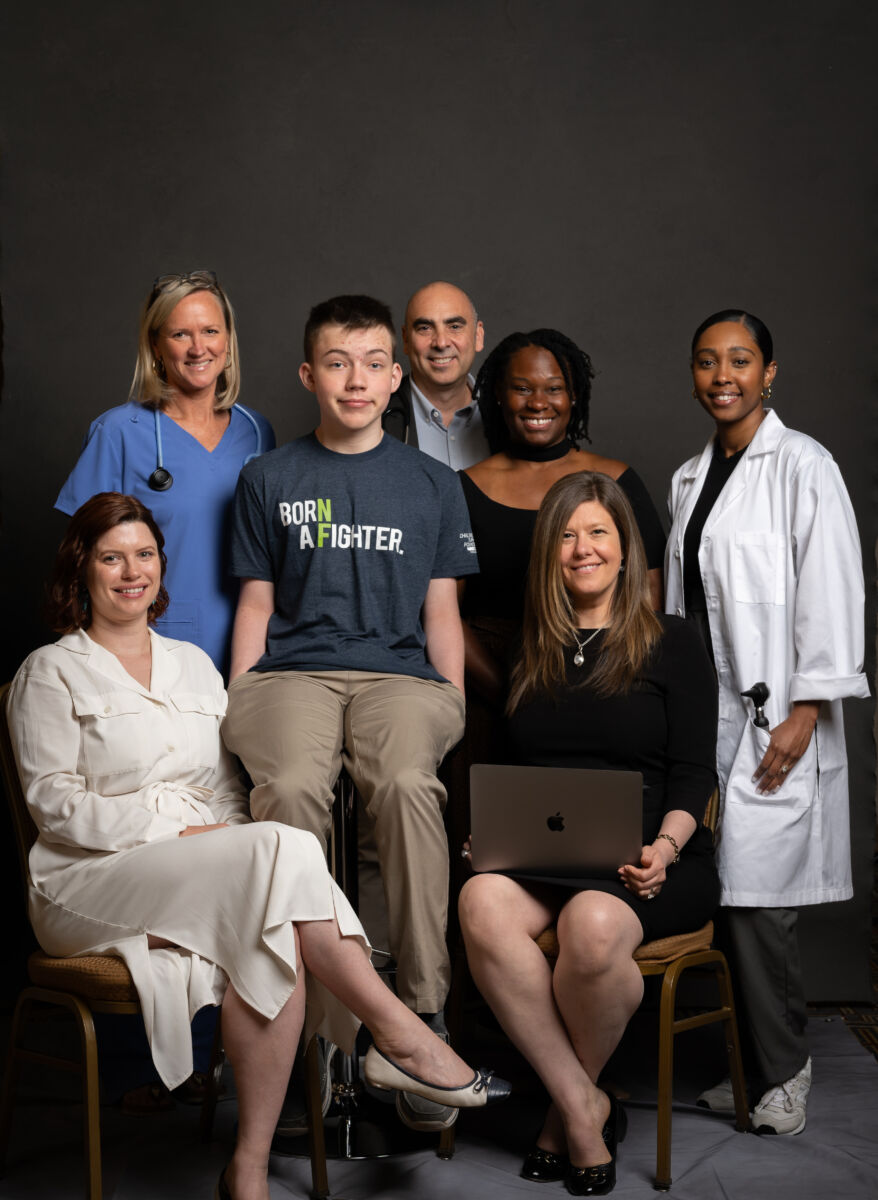The 2024 portrait collection, “Make NF Research Visible” features researchers, clinicians and patients that look at the impact of visibility on research – and how NF being seen (or not) affects access to funding, access to quality care, improved collaboration among specialties, access to progress and discoveries, and pairing patients with clinical trials. From bench to bedside, making NF research visible has a meaningful impact for everyone touched by NF.
Make NF Visible Photo Series
For several years, we have partnered with award-winning photographer Craig Warga to look at the different ways NF can affect a person’s life, even when no one else can see. This year our focus is on RESEARCH and its impacts on the NF community.
Make NF RESEARCH Visible
”Having NF is chaos as a 16-year-old. [There are] lots of appointments. If research could cure NF, it would mean freedom from appointments so I could live my teenage life without stress. Like my friends do. Right now, all I do is [go to] appointments. It would mean having to worry less about my future.
Carson McNallA teenage boy living with neurofibromatosis type 1
“Making NF research visible is crucial because it directly impacts the quality of audiology services and the holistic treatment of patients. When NF research is at the forefront, audiologists can access the latest medical/clinical advancements, allowing more informed decisions in treating our patients. This visibility also fosters improved collaboration among specialties leading to more comprehensive care for individuals with NF and allows us to focus on improving the patient’s quality of life through evidence-based practice.”
Ariel Cassar, Au.D (California State University. Sacramento, CA)
Making NF research visible is important to give all individuals with neurofibromatosis or schwannomatosis the opportunity to participate in cutting-edge clinical trials. If patients participate, it may help them today, but more importantly, it will help generations of patients in the future to solve the difficult questions of NF care. We cannot answer tough questions about NF without [NF] patients.
Dr. Heather L. Thompson, PhD., CCC-SLP (California State University, Sacramento, CA)
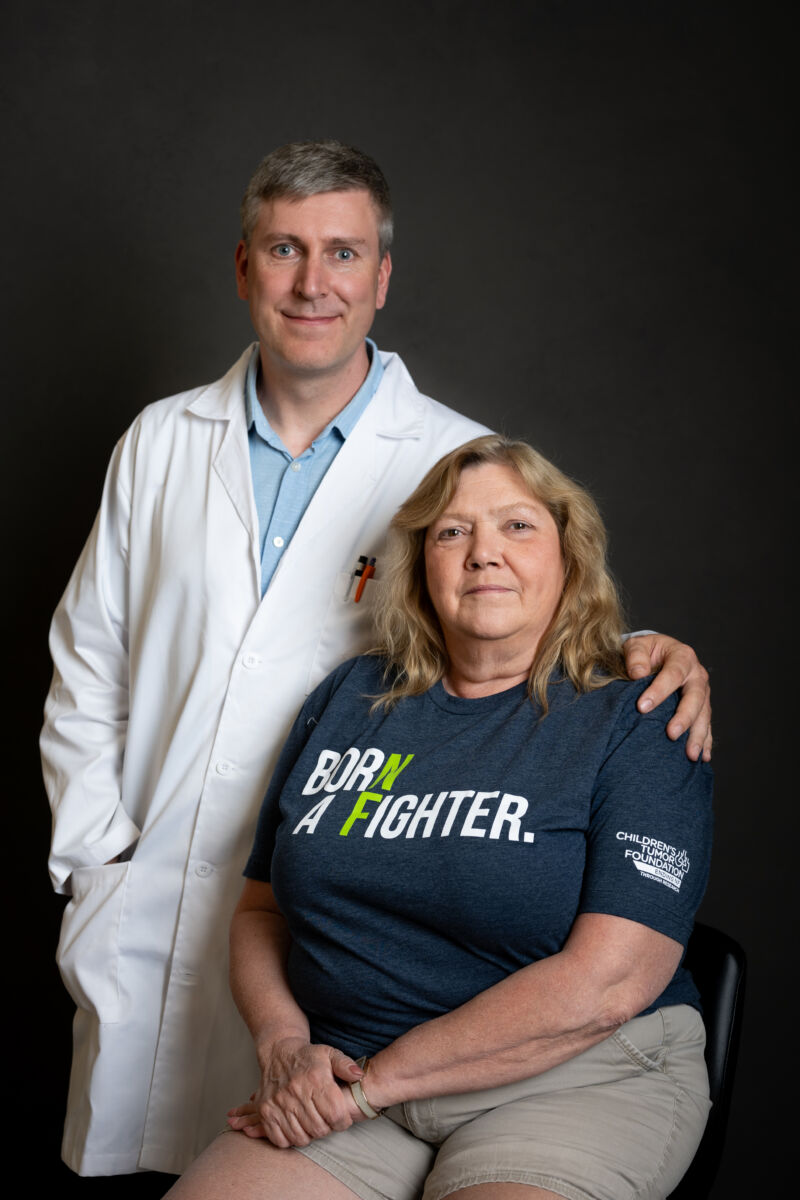
Michael Reuter, PhD & Rebecca Bialecki, PhD
“It is crucial to elevate the visibility of NF research within the broader community, shining a spotlight on diverse and innovative approaches. This not only reassures patients that a collective effort is underway to combat NF but also inspires new talent to join the cause. By attracting support from external funding agencies, we can aim for a level of recognition akin to more prevalent diseases, propelling NF research forward with dedicated scientists investing significant time and expertise in finding solutions.”
Michael Reuter, PhD (Morrison Lab, Leibniz Institute on Aging, Fritz Lipmann Institute (FLI), Jena, Germany)
“I was diagnosed with schwannomatosis, something I had never heard of, two years ago, at age 61. I know that any research gains made now might not benefit me directly, but will benefit generations to come. That’s important! I wear my Born a Fighter tee shirt proudly and talk to everyone about these rare disorders whenever I can. This is how we fight back, this is what gives me back my power.”
Rebecca J. Bialecki, PhD, lives with schwannomatosis
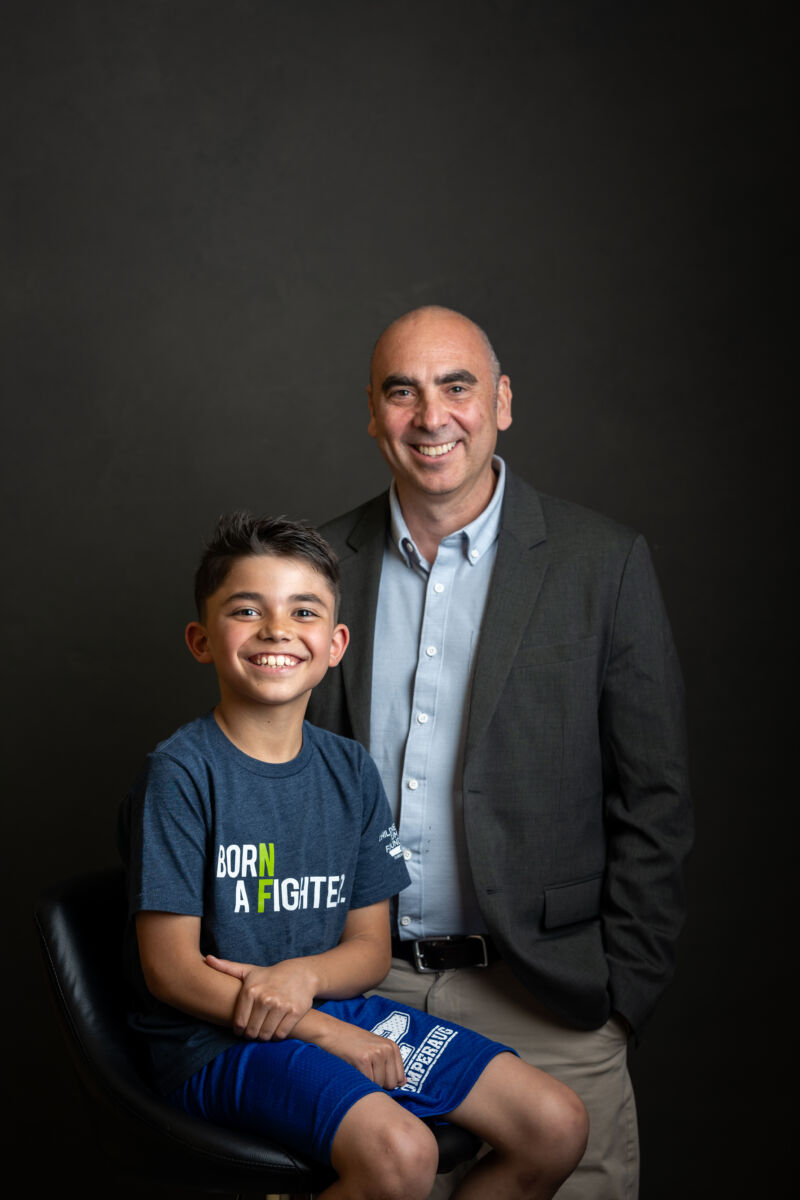
Alex Owens & Kaleb Yohay, MD
“Making NF research more visible means creating a world that NFers can navigate freely- without having to mask their symptoms or explain their existence. The coolest thing about NF research is the endless possibility: oral meds, topical creams, STEM CELL RESEARCH. We have nowhere to go but up, and in the past ten years, despite a global pandemic that brought the world economy to its knees, we have seen the flood gates open with a tidal wave of information, knowledge and leads to improve every aspect of NF from diagnosis, treatments and root cause analysis. It’s mind-blowing.” Click here to read Diane’s full response.
Alex Owens’ mom, Diane. Alex lives with neurofibromatosis type 1.
“When I first started taking care of people with NF over 20 years ago, there were no medical therapies and there were no clinical trials for NF. We were just beginning to understand the genetic and biologic basis of NF. And it used to be that when I talked to my patients and families, I had very little to offer other than information about the condition. I did not know if there would ever be effective therapies.
But, there has been lots of hard work going on in the background, researchers, clinicians and patients working together to better understand the biology of NF and find new treatments. Now we have new therapies, multiple clinical trials, a network of clinics for clinical care, a clinical trial infrastructure to facilitate getting trials up and running and completed safely and quickly.
Now, my conversations are very different. We have new therapies with new ones on the way. I can honestly tell patients and families that a cure is achievable in their lifetime.”
Kaleb Yohay, MD (Director, Comprehensive Neurofibromatosis Center, New York University Langone Health, New York, NY)
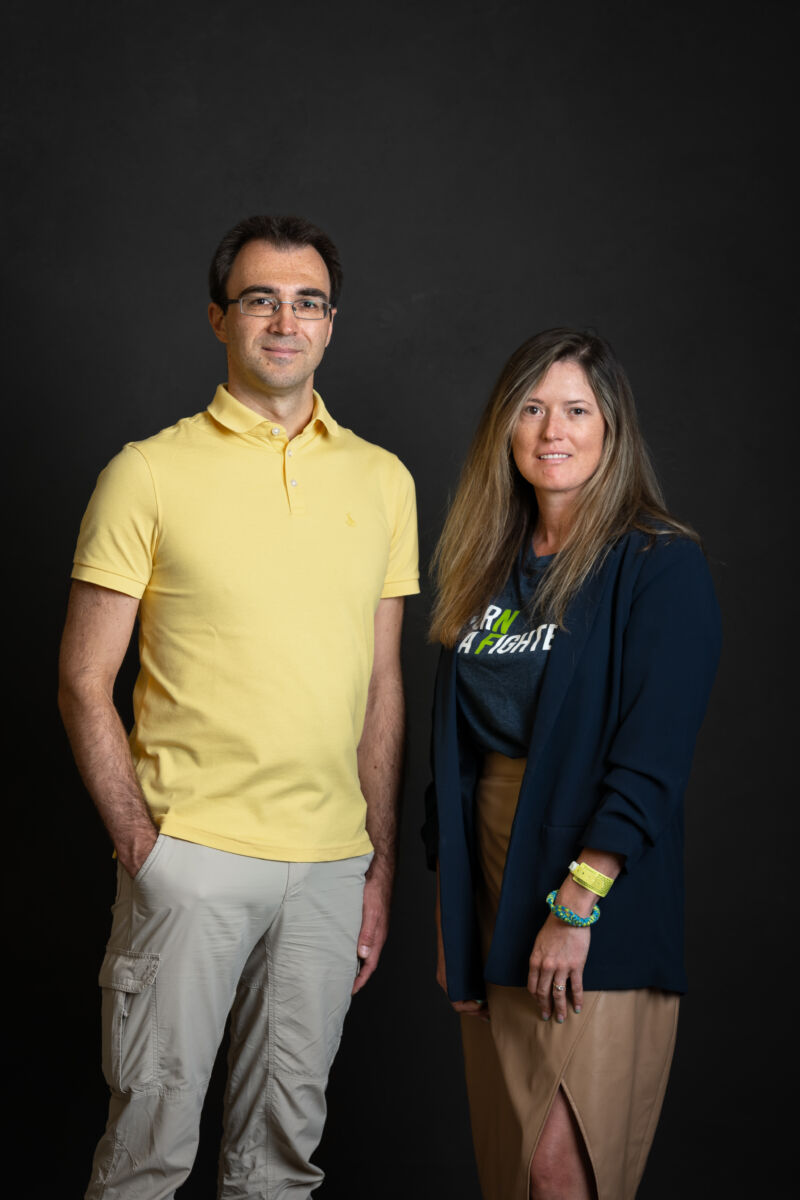
Lars Björn Riecken, PhD & Jamie Carol Woods
“Making NF research visible raises public awareness – you can’t fight a battle you don’t see. It puts a face to what we are fighting for. It showcases the daily heroes of NF, it encourages society to join in and support the fight. We are in this together, and we will not back down until all of us have won.”
Lars Björn Riecken, PhD, Preclinical Team Lead at Morrison Lab, Leibniz Institute on Aging – Fritz Lipmann Institute (FLI), Jena, Germany
“Making NF and NF research visible would be a weight lifted. Growing up with [a diagnosis of] NF2-related schwannomatosis at an early age, I had to adapt to the unknown future. I felt alone and lost in the healthcare system. With NF and NF research visibility starting to improve, that feeling of being alone is slowly going away and I have hope for the future.”
Jamie Carol Woods, lives with NF2-related schwannomatosis
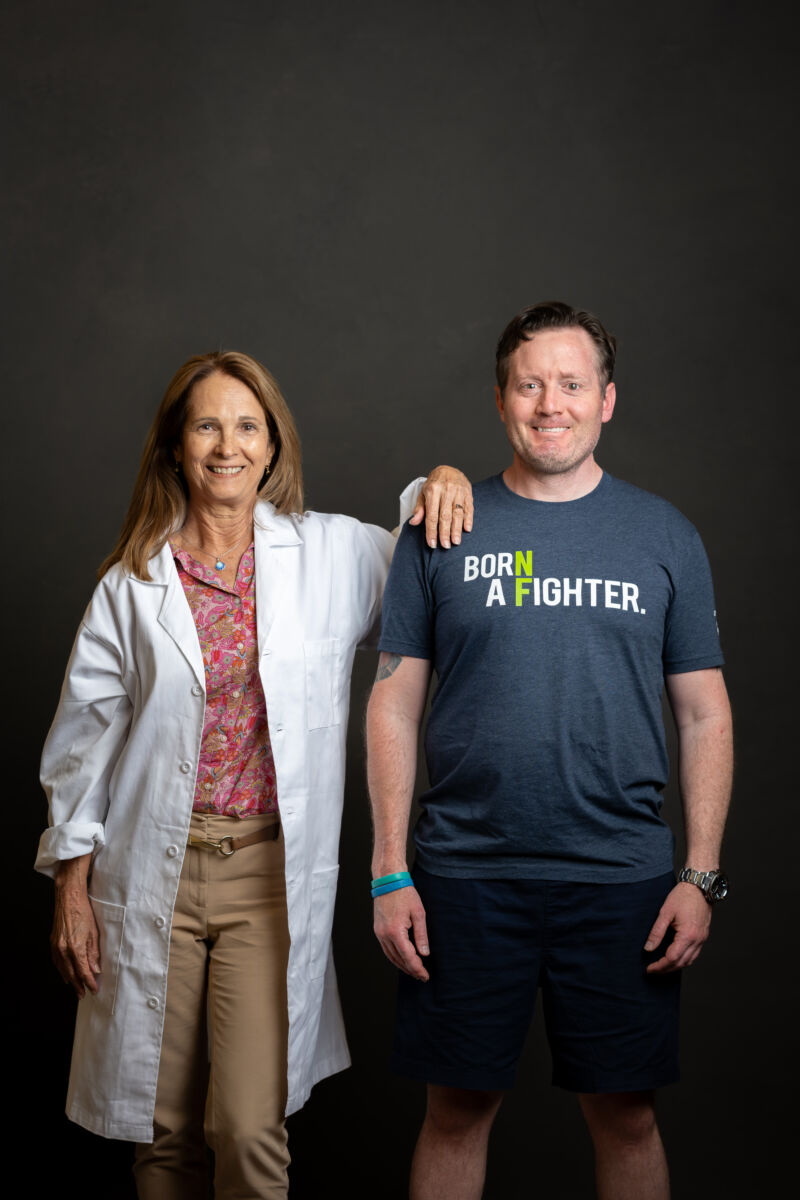
Cristina Fernandez-Valle, PhD & Jake Lipe
“When I was diagnosed in 2003 the options were surgery or radiation. Now we’ve got multiple drugs in trial, we are fighting to get some approved and someday I truly believe gene therapy is going to put us over the top. We are truly our own best advocates. I’m here to tell my story and bring more people into the fight. We need more patients to step up and do the same. We need people to understand what we are up against.” Click here to read Jake’s full response.
Jake Lipe, lives with NF2-related schwannomatosis
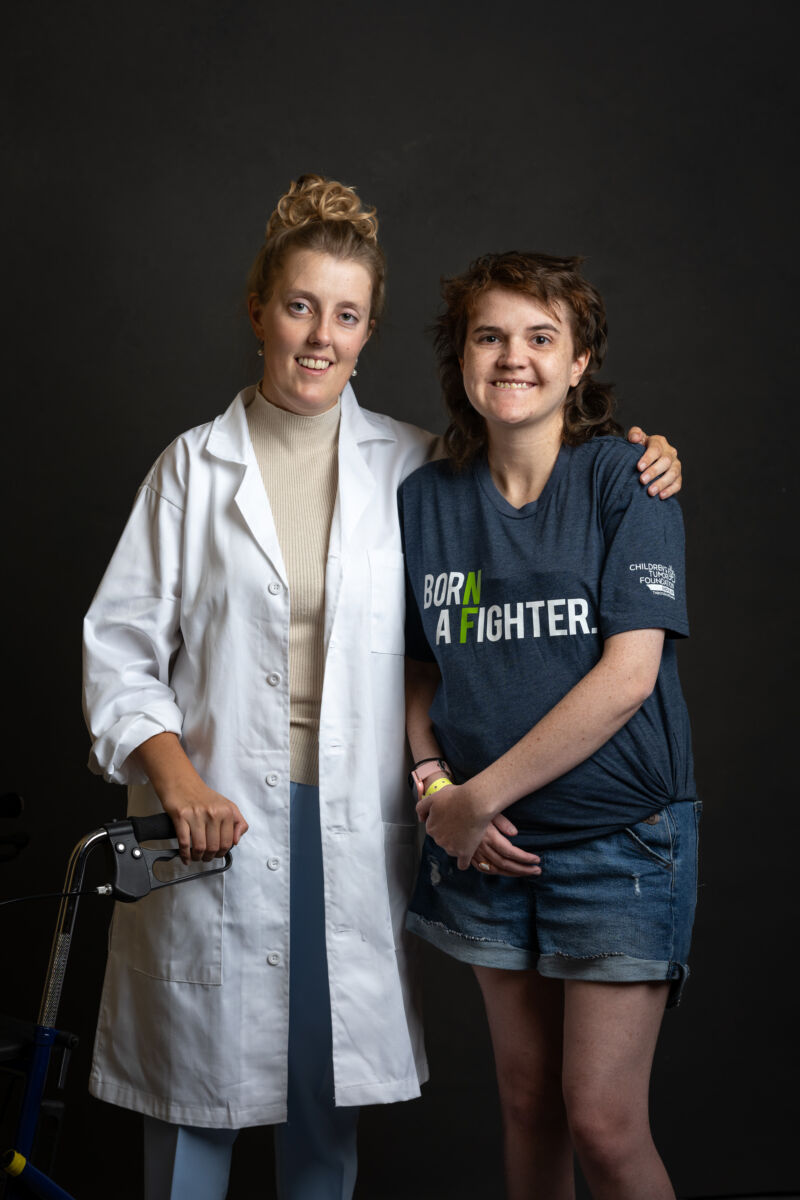
Britt Dhaenens, MD & JJ Dunn
“NF is important to me because it means to keep fighting and never give up. I hope to find a cure someday. I want everyone to know about NF.”
JJ Dunn, lives with neurofibromatosis type 1
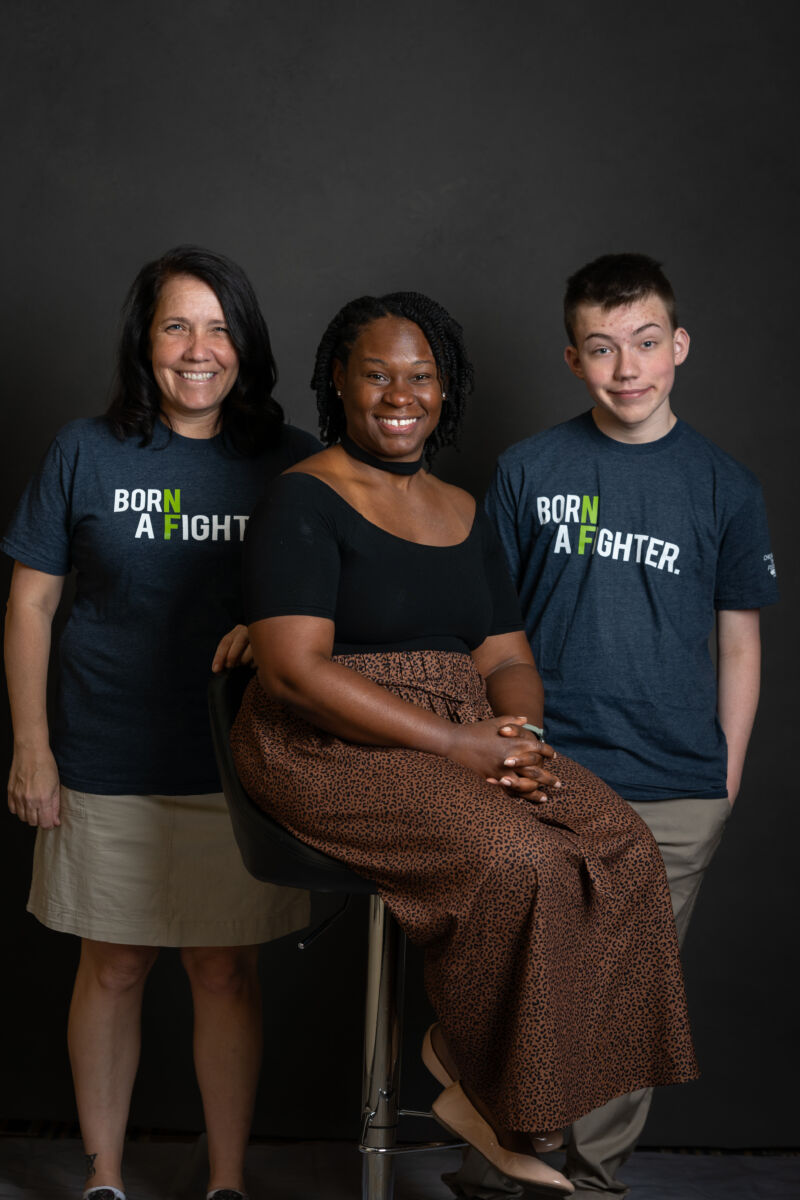
Shannon McNall; Alicia Gomes, MS, CGC & Carson McNall
For me making NF research visible not only allows breakthroughs in NF but also allows for knowledge about NF. It helps doctors navigate tests and treatments. And it allows patients to self-advocate for those tests and treatments. NF research also means hope that the next generations will not have to endure what the current generation has. Every time I take my son to another doctor appointment or see him face challenges I turn to hope. I rely on the hope of a cure to get us through the hard times.
Shannon McNall (lives with neurofibromatosis type 1 and mom to Carson, also pictured, who lives with neurofibromatosis type 1)
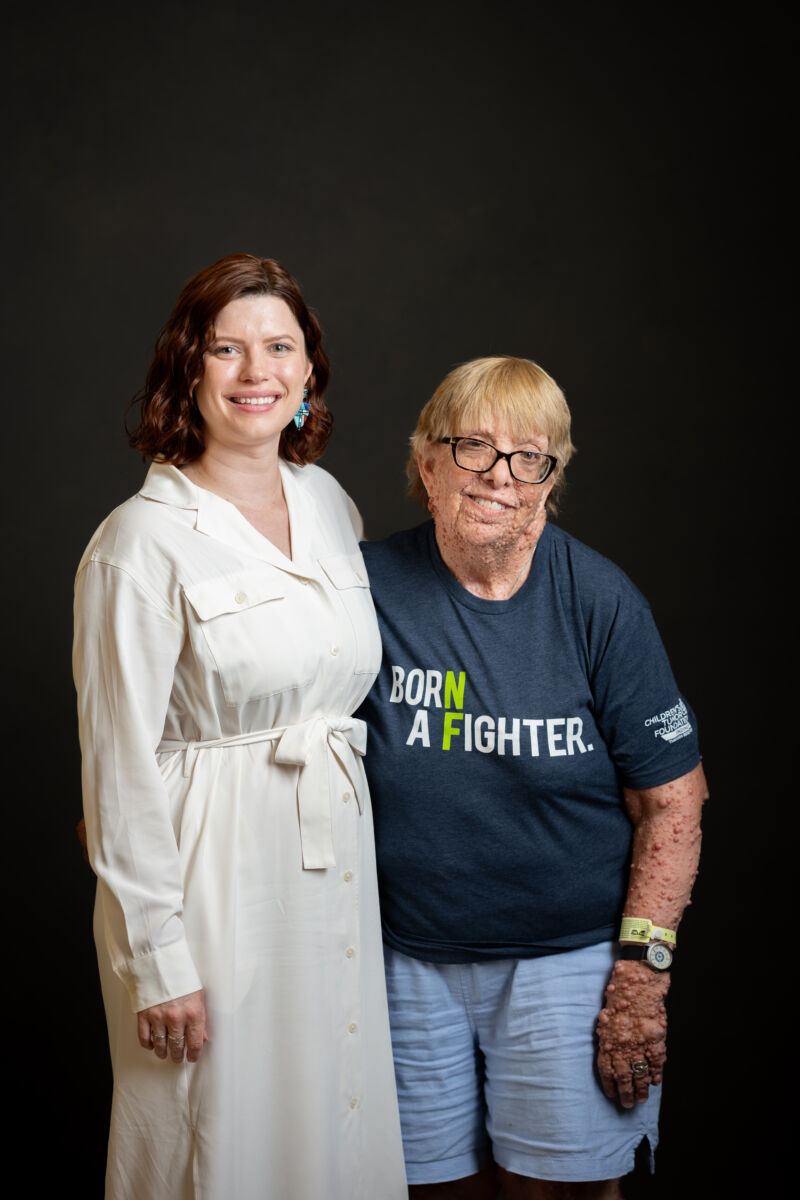
Kara Anstett, MS, CGC & Jennifer Berube
“Over the years I’ve practiced, my conversations with newly diagnosed patients and parents have shifted as more treatments move down the clinical trials pipeline, and I’ve seen this change how families cope with their diagnosis. Having more treatment options, and the promise of new advances as we enter the era of genomic medicine is critical to the wellbeing of families living with neurofibromatosis and schwannomatosis.”
Kara Anstett, MS, CGC (Certified Genetic Counselor, Comprehensive Neurofibromatosis Center, New York University Langone Health, New York, NY)
“I feel that, by making NF research visible, more people will understand NF and what we go through. For me finding a cure is more for the future babies and children born with this. I would like a cure for them. That way they won’t suffer with pain. I’m 61 and know they probably won’t find a cure in my lifetime but they do for the younger generations, that’s my hope and dream. Plus if research can find a cure for NF then we can cure many things beyond NF.”
Jennifer Berube, lives with neurofibromatosis type 1
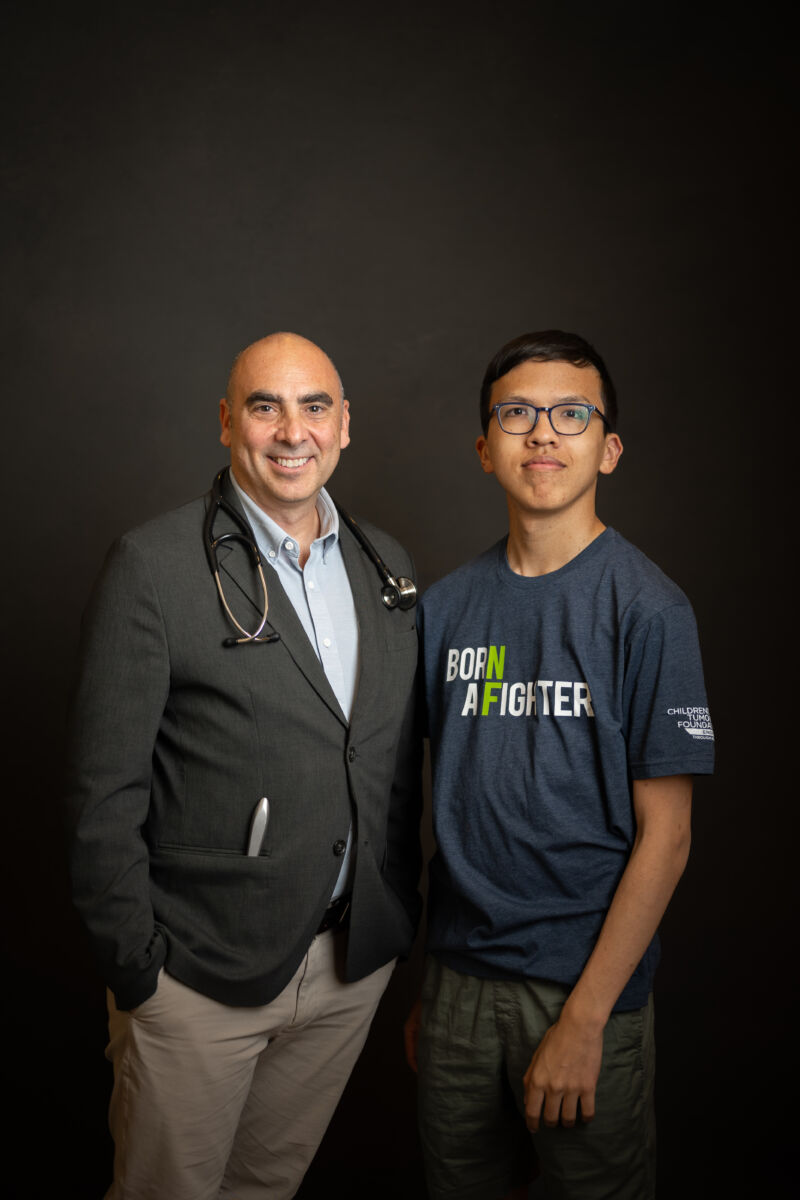
Kaleb Yohay, MD & Aiden Warga
“When I first started taking care of people with NF over 20 years ago, there were no medical therapies and there were no clinical trials for NF. We were just beginning to understand the genetic and biologic basis of NF. And it used to be that when I talked to my patients and families, I had very little to offer other than information about the condition. I did not know if there would ever be effective therapies.
But, there has been lots of hard work going on in the background, researchers, clinicians and patients working together to better understand the biology of NF and find new treatments. Now we have new therapies, multiple clinical trials, a network of clinics for clinical care, a clinical trial infrastructure to facilitate getting trials up and running and completed safely and quickly.
Now, my conversations are very different. We have new therapies with new ones on the way. I can honestly tell patients and families that a cure is achievable in their lifetime.”
Kaleb Yohay, MD (Director, Comprehensive Neurofibromatosis Center, New York University Langone Health, New York, NY)
“I hope that eventually, we can get to a point where most people know what NF is, and the name is one of the more known medical conditions that almost anyone knows the name of. It’s Incredibly important that we make sure that other people that don’t have NF know what NF is, and the research scientists have done to learn more about it. If there’s more awareness about the research that has been made, there are more people that can help support NF research too.”
Aiden Warga, lives with neurofibromatosis type 1
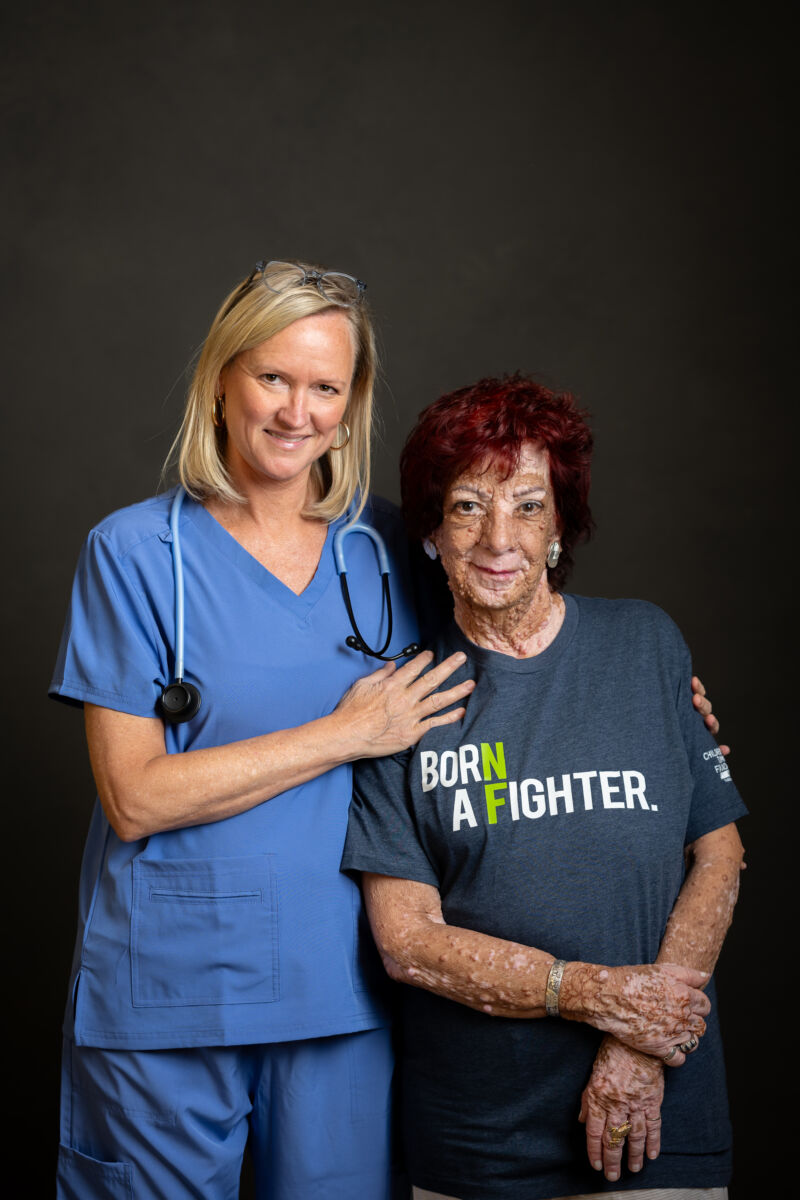
Emily Little, RN & Tina Cruz
“Visibility of NF research helps to raise awareness about the condition itself. [Visibility also] provides hope and support to individuals living with NF and their families. Knowing that there are dedicated researchers working towards better treatments or a cure can offer encouragement and motivation to those affected by the condition.” Click here to read Emily’s full response.
Emily Little, RN, BSN (The Comprehensive Neurofibromatosis Center, Johns Hopkins University, Baltimore, MD)
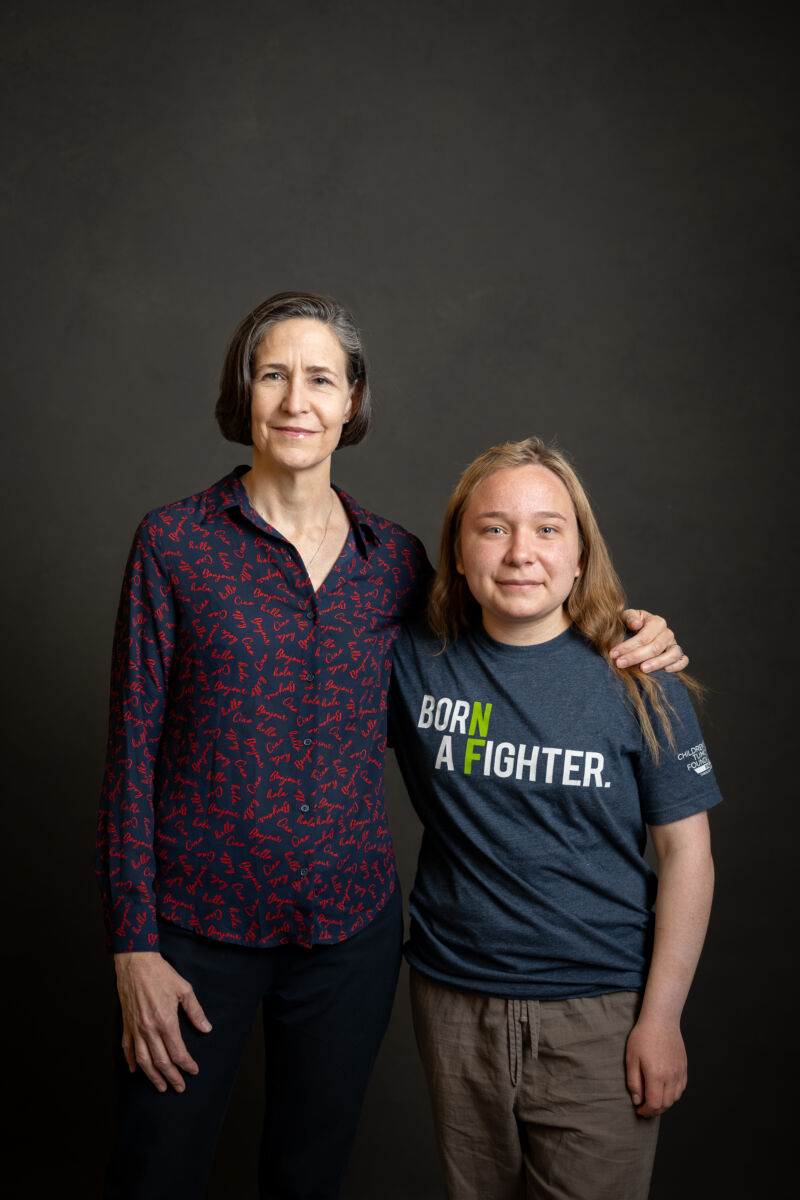
Tena Rosser, MD & Holly Beeman
“Making NF research visible shows the incredible passion that the NF medical community has for making innovative discoveries to improve the quality of life for those affected by NF. Remarkable progress has been made over several decades as basic and clinician scientists have collaborated to develop new drugs and other interventions for these conditions. NF research is at the heart of the discussions that clinicians have with patients and families, allowing us to spread hope for the transformative treatments yet to come.”
Tena Rosser, MD (Director, Comprehensive NF Clinic, Children’s Hospital Los Angeles, Los Angeles, CA)
“NF research is important because it’s life saving for people and makes a huge difference in people’s lives. This means a future where I don’t constantly deal with being in pain or developing more tumors.” Click here to read the full response from Holly and her mom Carrie.
Holly Beeman, lives with neurofibromatosis type 1
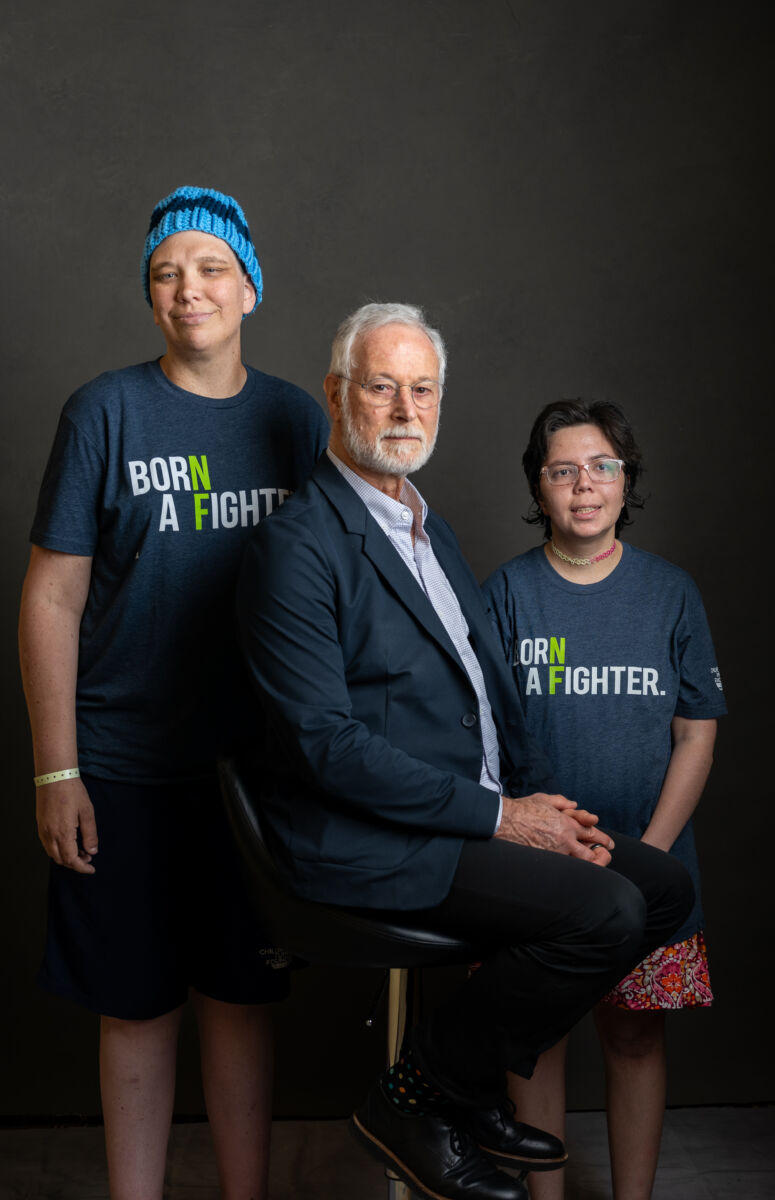
Caitlin "Cubby" Robertson; Bruce Korf, MD, PhD & Aidan McCarthy
“For me I have a hard time explaining NF to people sometimes because they assume I’m lying about it and walk away. I think if it was on the news more often or if more events were held then people would understand it. I don’t like living with NF but at the same time I would not be me without it. I love the effort the researchers are putting in. I feel it is important to make NF research visible because a lot of people do not know about the condition and also people with NF deserve to know what research is finding and be kept updated on it.”
Caitlin “Cubby” Robertson, lives with neurofibromatosis type 1
“I have been seeing people with all forms of NF since 1983, so now over 40 years. During this time I’ve had the privilege of witnessing advances in the diagnosis and treatment of NF, including discovery of the genes, development of genetic testing, and clinical trials, including the advent of one FDA-approved treatment for NF1. If there’s one thing I’ve learned these four decades, it’s that progress cannot occur quickly enough – taking care of children and adults with NF has instilled in me a sense of urgency to find solutions to these conditions.”
Bruce R. Korf, MD, PhD (Associate Dean for Genomic Medicine and Distinguished Professor of Genetics at University of Alabama at Birmingham Heersink School of Medicine, Birmingham, AL)
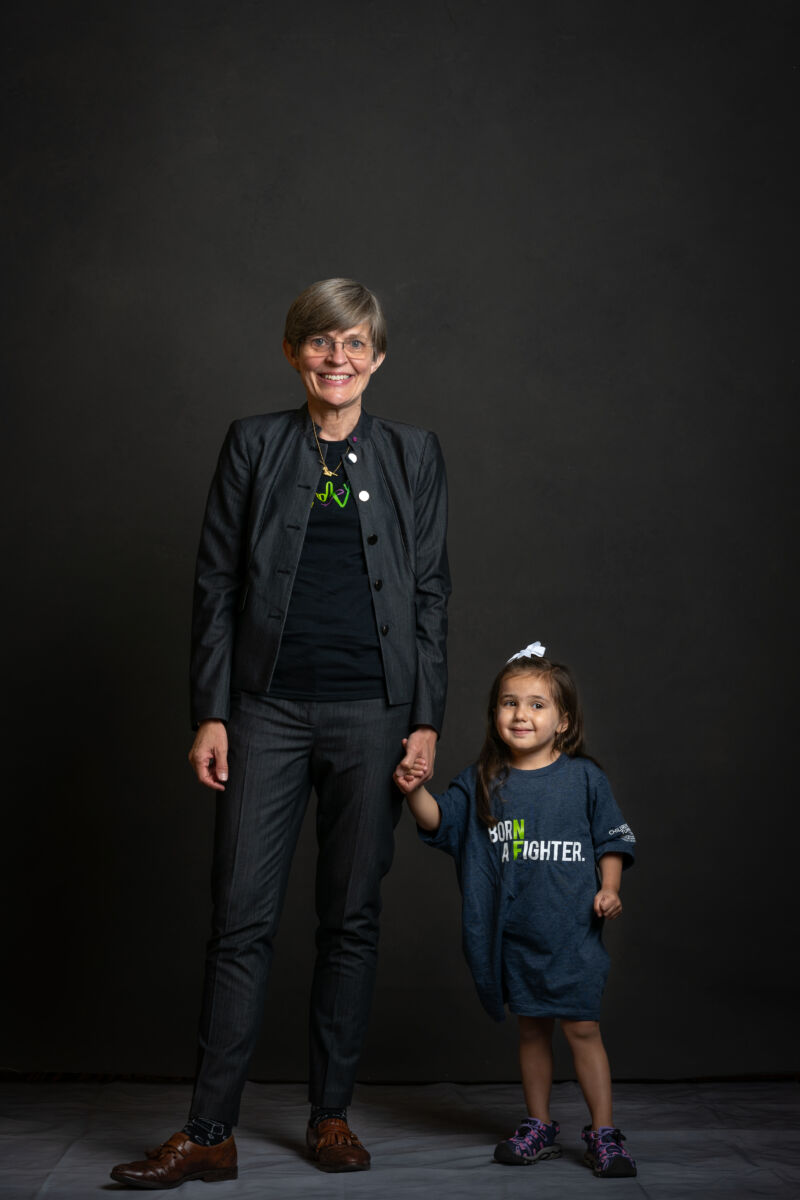
Annette Bakker, PhD & Anabelle Domazos
“Making NF Research Visible is about making hope visible. It’s knowing that dedicated researchers are working tirelessly with the patients to understand the landscape and discover and develop new treatment options. Visibility is a beacon of light in what can often be a daunting journey, offering reassurance that those living with NF are not alone in their fight. More than simply sharing data, visibility is key to fostering partnerships that can accelerate the development of much-needed therapies and improve patient outcomes.”
Annette Bakker, PhD (Chief Executive Officer, Children’s Tumor Foundation, New York, NY)
“Making NF research visible is so very important because it gives the impacted families hope. This journey only began for us 4 years ago, but we are so very grateful for the years and years of research and progress that has been made to date. With this condition there is a lot of ‘watching and waiting’ and the continued research gives me hope that, in my daughter’s lifetime, there will be more answers and treatment options readily available for possible complications that she may face. It also gives me hope for her children’s children and future generations that may inherit this genetic condition.”
Annabelle Domazos’ mom Nicole. Annabelle lives with neurofibromatosis type 1.
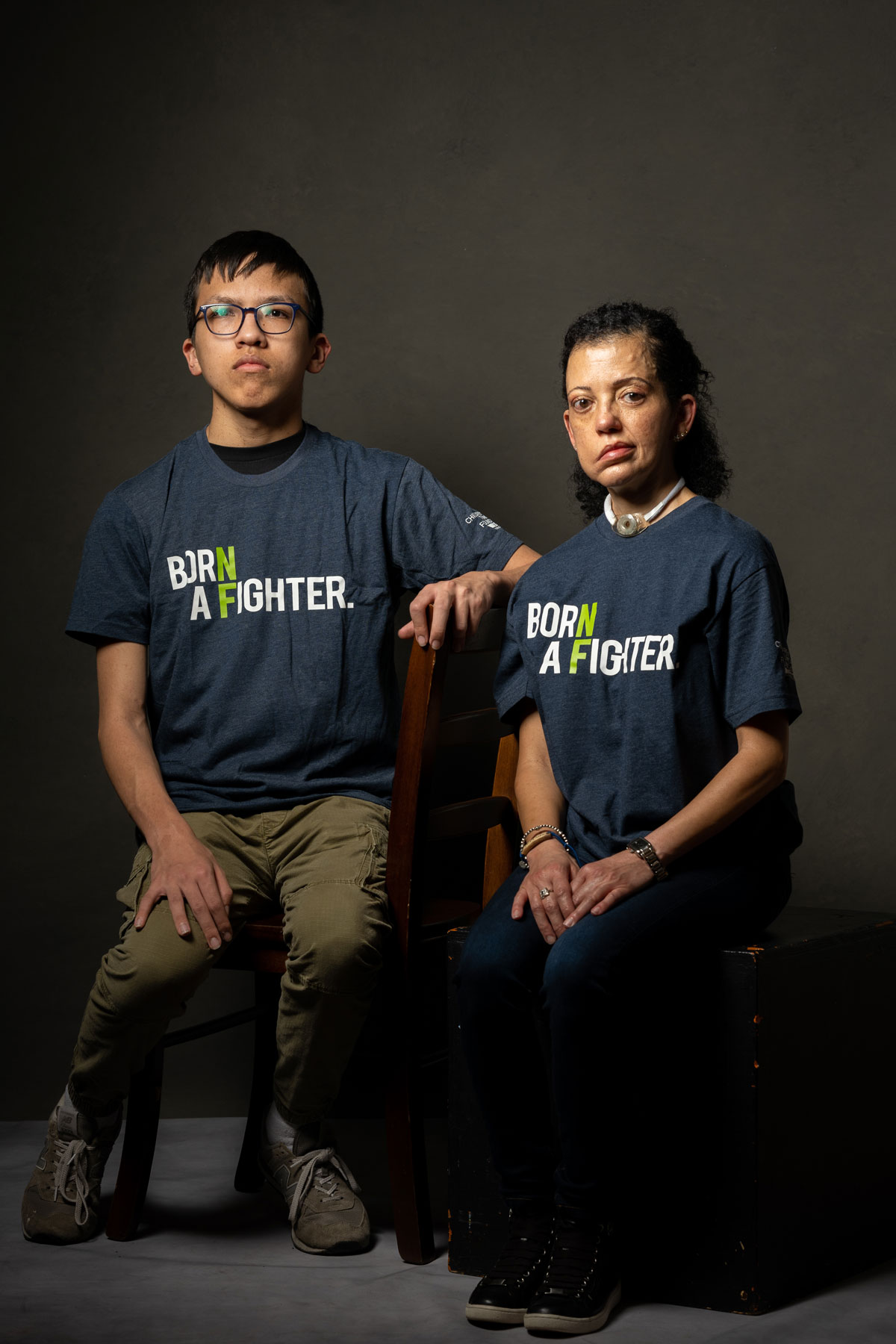
Nissa & Aiden
“Making NF visible cultivates community, connection, and deep friendships with others just like you. It creates so many opportunities for support, encouragement, guidance, and an improved life. This kind of advocacy helps provide a guide on this hard journey and is a constant reminder that you can do this and you are not alone. By ourselves we can only go so far, but together we can go even further.”
Nissa Novas, 48 (NF2)
“It’s important to make NF visible and show all the different ways it affects people. Because there are people who have been affected by NF severely and also not as much, and it’s important to show all sides.”
Aiden Warga, 16 (NF1)
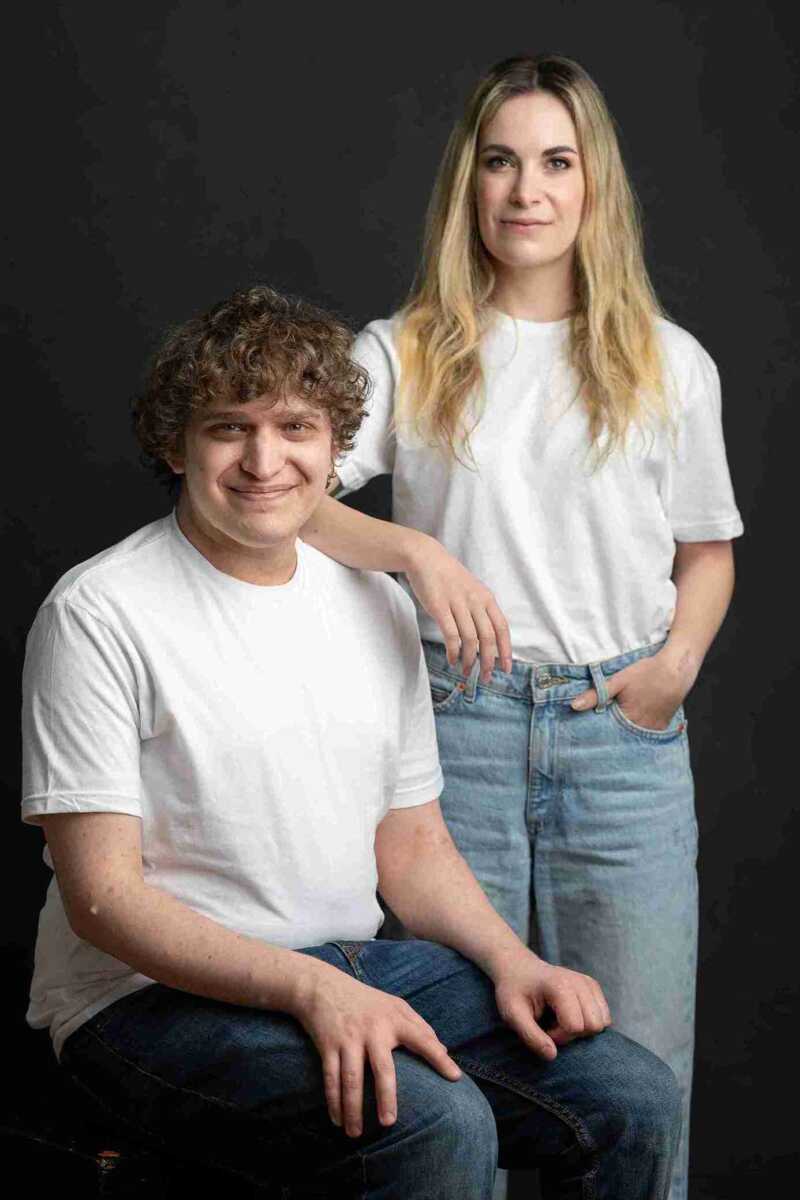
Leanna & Jesse
“It’s important to make NF visible because it’s more common than people realize. Even though it’s still considered a rare disease, so many people have it, so many people are being diagnosed with it, and so many people often show symptoms in unique ways. As for me, you would never guess that there was something wrong unless I said something about it. This is why I decided to start a TikTok series to document the journey of my chemotherapy drug trial.
“The amount of people that have reached out to me is incredible. People from all over the United States, and as far as Portugal and even Australia asking me all about NF, wondering what to do and how to cope with their diagnosis. I knew we were out there, but to have this tangible response feels surreal. It was truly my personal realization of, “Wow. We’re out there.” I think that type of awareness is needed. It’s only going to help research grow, hopefully find a cure, and make NF visible.”
Leanna Scaglione, 31 (NF2)
“I think it’s important to make NF visible because it brings more attention to the cause, and more attention is more people being aware, more donations, and that could lead to more funding for treatment and a cure for NF.”
Jesse Sorman, 25 (NF1)
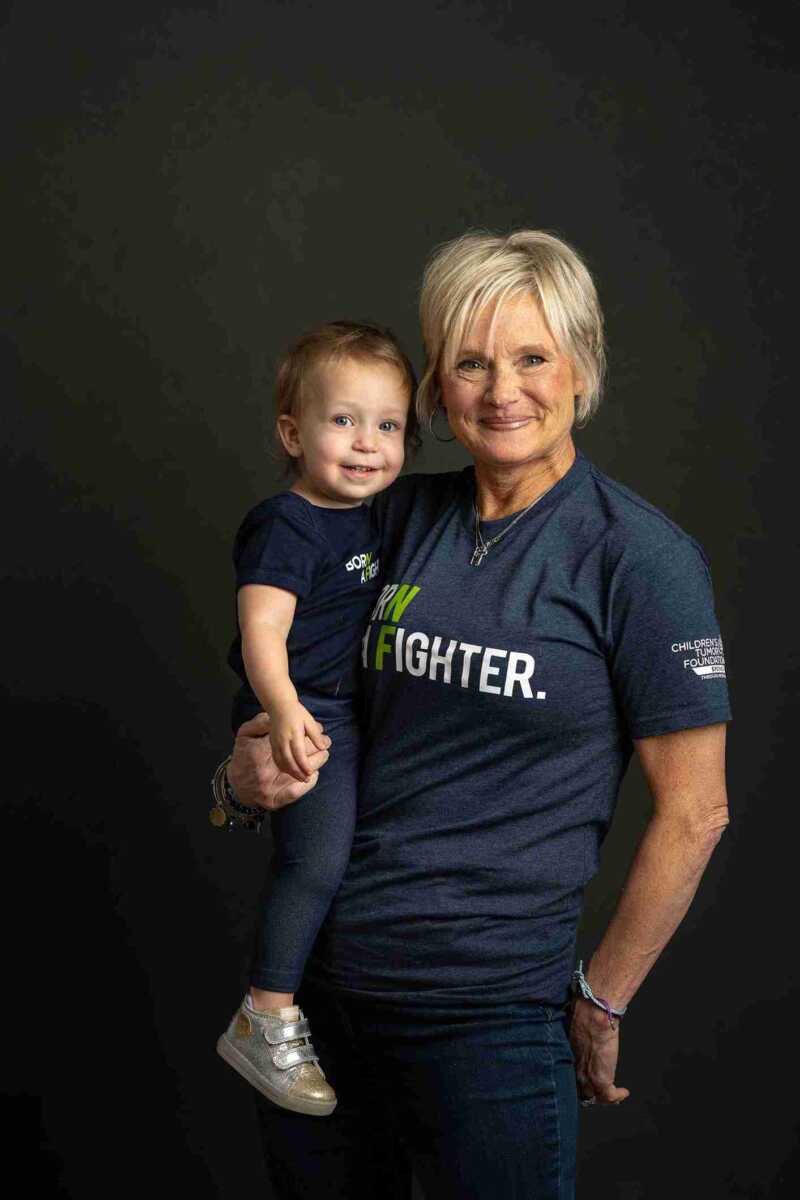
Ayla & Michele
“It’s interesting being in this position where Ayla cannot advocate for herself, but we feel pretty sure that she’d want to be able to support other people like her, and the way she can do that right now is through us.
“It’s important to make NF visible because of Ayla, because we want people to understand what she goes through and we want people to help support her. The more visibility there is, the easier time she’ll have.”
Ayla Ackerman, 2 (NF1) – Shared by her parents Jason & Jessica
“The reason why I think it’s important to make NF visible is because a lot of people do not understand what NF is. As you see me, I look very normal on the outside, but on the inside I have over a hundred tumors in my body. I have three brain tumors. I have multiple tumors all over my spine and in my abdomen. I have them anywhere there’s a nerve ending. You cannot see them, but it does not mean that they are not there.
“So for people to be able to explain what NF is and make awareness for NF, gives us the opportunity to be able to find a cure to help this horrendous genetic disorder. I think when there’s a greater understanding, more people will be aware of NF and be able to support the Children’s Tumor Foundation. And with that I think we’ll be able to have more research available, which is very important to me. I want to find a cure, not only for me, but for the younger generation coming up. And that is what I’m here for, to fight for the next generation of NF Heroes.”
Michele Holbrook, 56 (SWN)
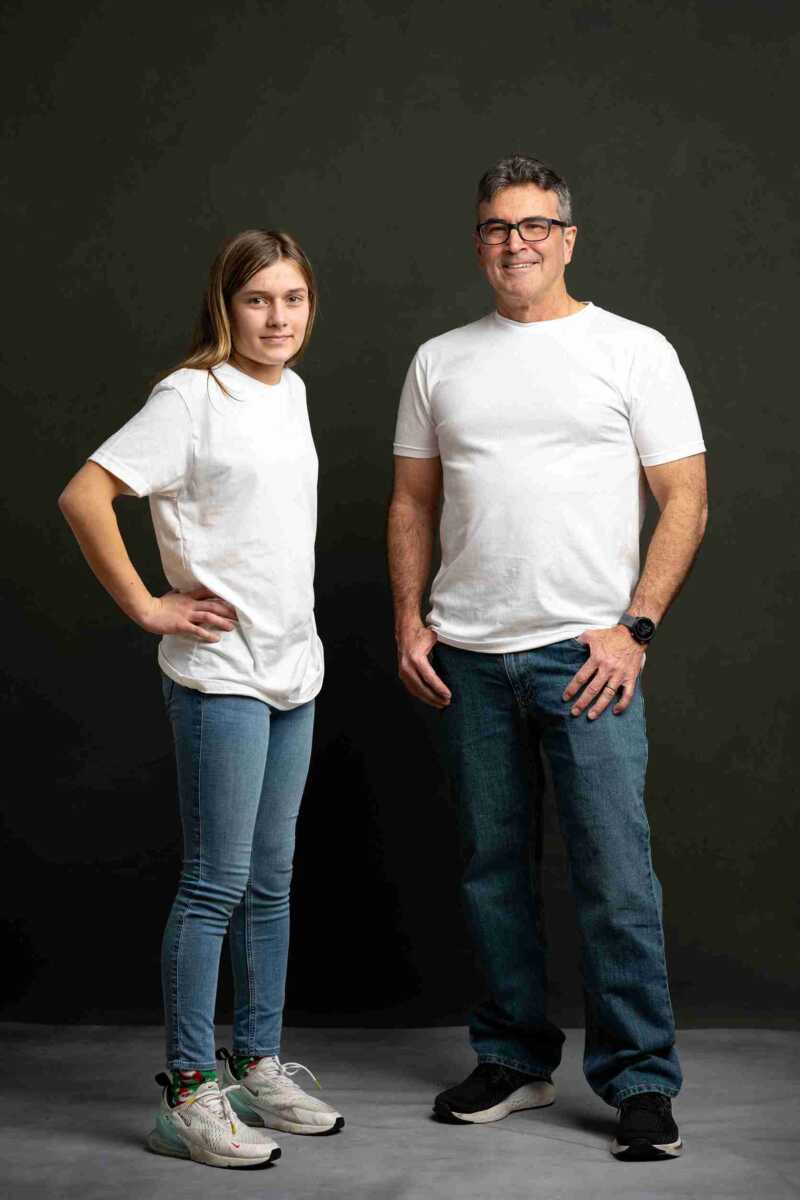
Joel & Isabelle
“The more that people know about it and understand and are aware of it, there’s a better chance of getting attention it needs from a research standpoint and to give people hope who suffer from it. I’ve done some fundraising with the NF Endurance team and it was wonderful to get the word out, to spread awareness about the disorder and drive contributions to help with research. And as I’ve learned more about the disorder, the different types of it, I’ve also embraced my own form of it, which is schwannomatosis. And something that was in the background [of my life], bringing it to the foreground in my own life has made me more comfortable with sharing it.”
Joel Cadman, 61 (SWN)
“It’s important to make NF visible to help find a cure for NF and so people will not be scared of it, so they can feel supported.”
Her 17-year-old brother Tristan added, the NF community is wonderful and supportive and so important.
Isabelle Moulsdale, 15 (NF1)
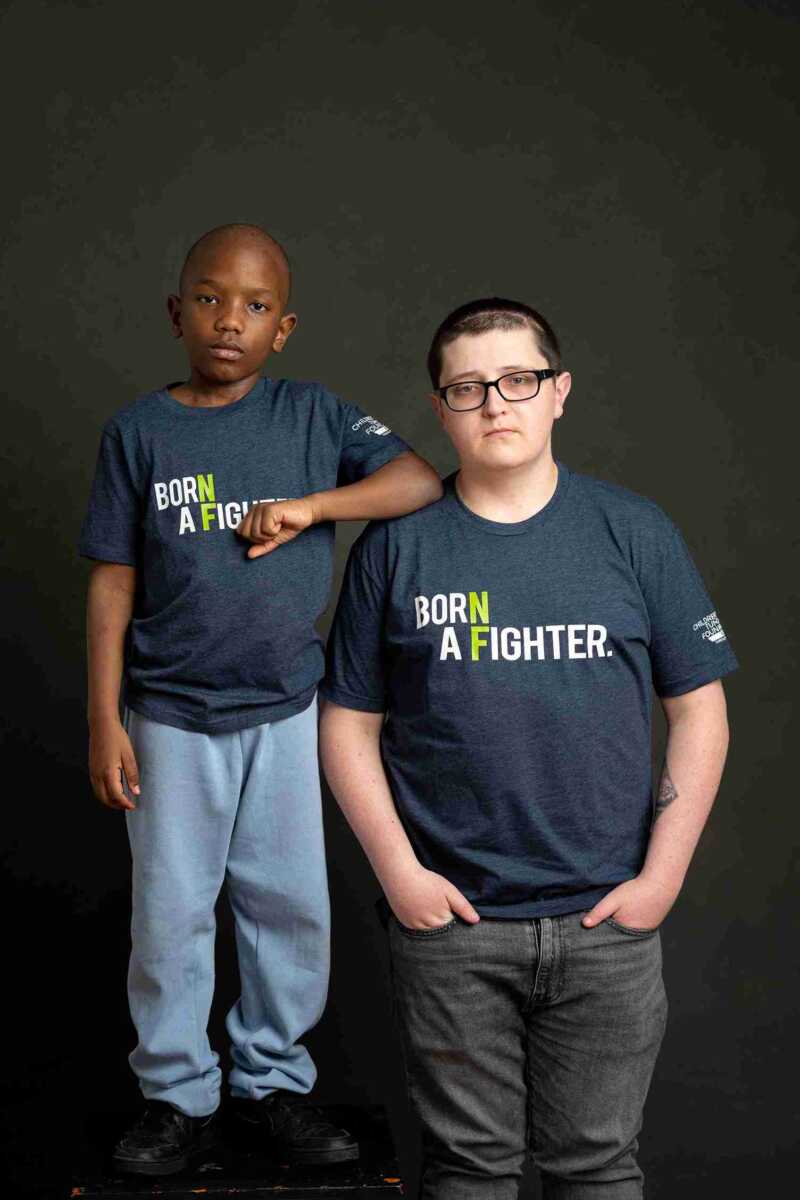
Jayshaun & Blake
“It’s important to make NF visible because some people are different than other people. And I wanted people to know I had NF, so I wrote a book about it.”
Jayshaun Henry, 10 (NF1)
“I think NF should be visible because it’s one of those unknown disorders that’s relatively common and people don’t know much about it.”
Blake Robinson, 22 (NF1)
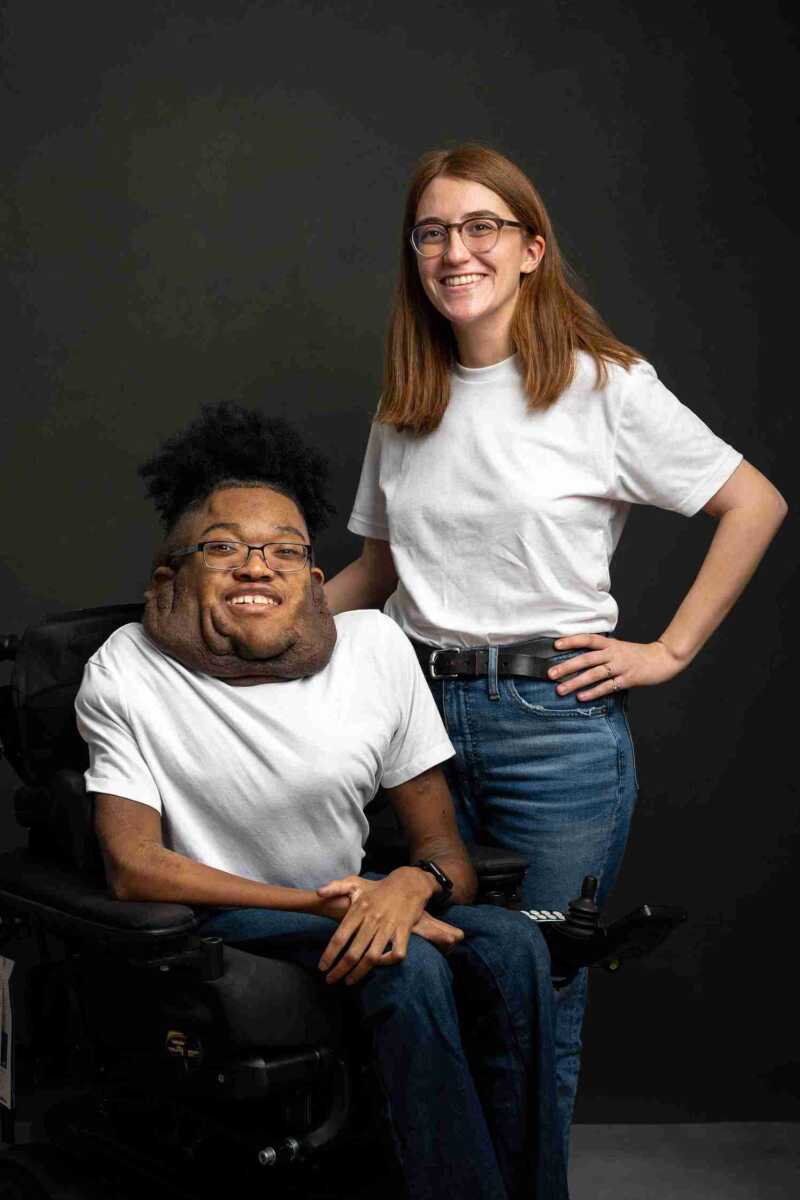
Sarah & CJ
“I’m an artist. I’m a teacher. I’m a daughter. I am a college graduate. I have done so much more than what this disease is. I remember kind of just reading about the expectations and whatnot of NF and I was waiting for that to happen to me. And it’s okay that it’s not happened to me or it might happen and I’m fine with that… I love my family and they love me, not because I have NF, but because I’m the person in their life who happens to have NF.
“There’s beauty in the sense that everyone is unique who has it, and it’s really powerful to see other people who are using their voice to show that though they have all these challenges in their life, there’s so much more [to them] than that. I think it’s important to make NF visible because it’s one of those really rare genetic disorders that really nobody knows about besides the neurofibromatosis community. And because of that, just making it visible and us just saying it and talking about it and having this conversation is part of that whole movement about making it more known.”
Sarah Rodbell, 23 (NF1)
“If you don’t look like you have a disability, but you really do, people might make assumptions that you’re just wanting stuff just to want it or you don’t really need it. Honestly, I feel like it might be harder for people whose tumors aren’t visible to get the help they need, because for me, people can see my wheelchair, they can see the tumors. So people might say, “Oh, do you need help?” more, or I might get more accommodations. I think it might be easier compared to other people where you can’t see their tumors.
“It’s important to make NF visible because the more people understand what people with NF go through and how it affects them, the more people can find ways to help and find cures or just make things easier for people with this disability.
“I like everything that other teenagers like, like watching YouTube and football, going to my friend’s house or playing video games, shopping. I think when people see other people that are disabled, they make assumptions that they’re not normal or not just like every other teenager. I think it’s most important to realize that we’re just like every other teenager and enjoy everything that normal teenagers enjoy.”
CJ Hines, 20 (NF1)
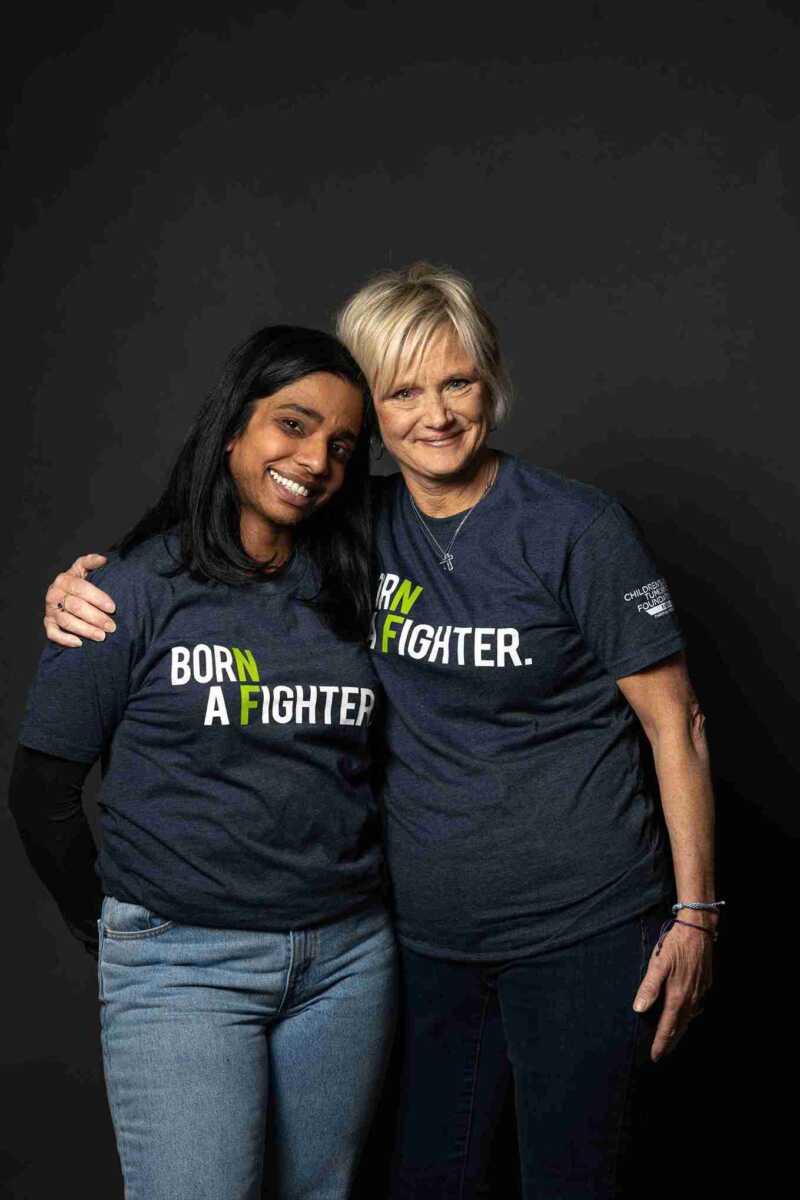
Lilly & Michele
“I think people sometimes struggle to understand what it really means to have an ailment that may not be so obvious, or some people do have it very obvious and the toll that it takes on your body and your mind. That would probably be the hardest thing about having NF, and even being a mild case, people just don’t see the effort and the toll that it takes on you mentally, physically, and how it affects your relationships.
“It’s important to make NF visible because people don’t know about it, that a range exists. I think people have a tendency to be softer, kinder to people around them if they have an idea of what they’re going through.”
Lilly Simon, 34 (NF1)
“The reason why I think it’s important to make NF visible is because a lot of people do not understand what NF is. As you see me, I look very normal on the outside, but on the inside I have over a hundred tumors in my body. I have three brain tumors. I have multiple tumors all over my spine and in my abdomen. I have them anywhere there’s a nerve ending. You cannot see them, but it does not mean that they are not there.
“So for people to be able to explain what NF is and make awareness for NF, gives us the opportunity to be able to find a cure to help this horrendous genetic disorder. I think when there’s a greater understanding, more people will be aware of NF and be able to support the Children’s Tumor Foundation. And with that I think we’ll be able to have more research available, which is very important to me. I want to find a cure, not only for me, but for the younger generation coming up. And that is what I’m here for, to fight for the next generation of NF Heroes.”
Michele Holbrook, 56 (SWN)
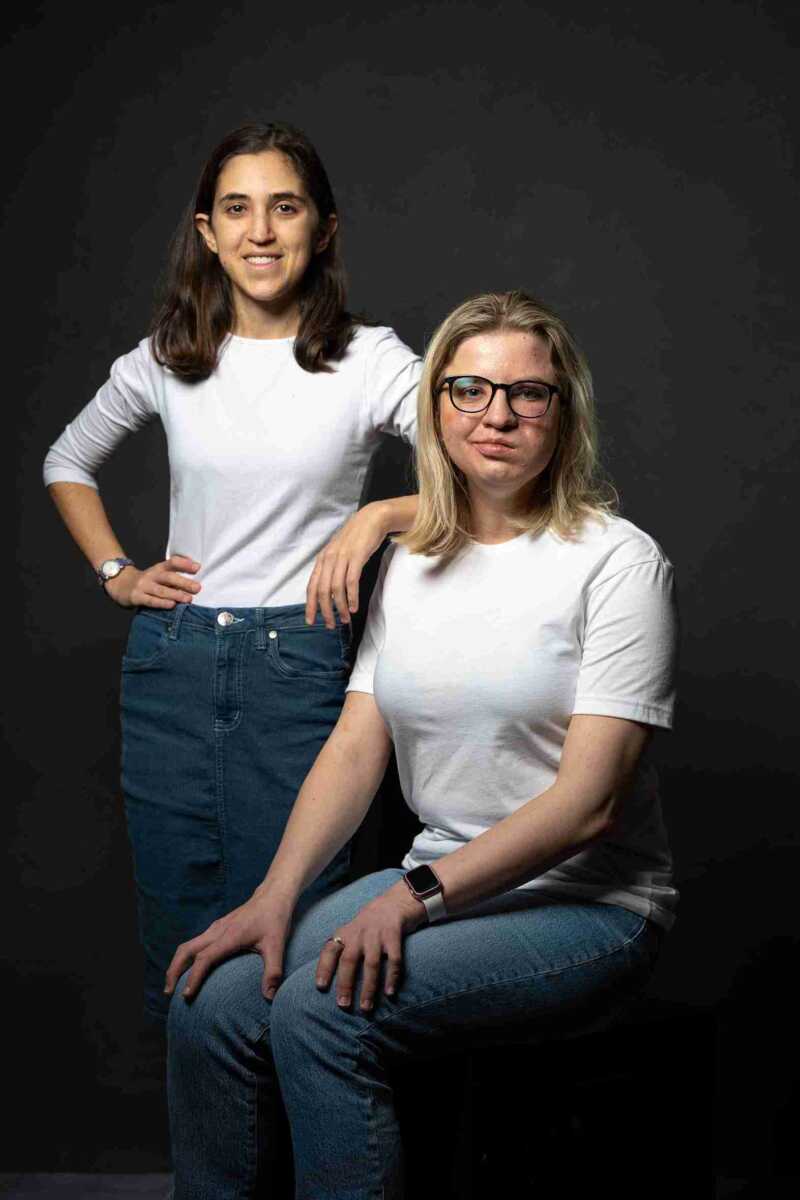
Christine & Elana
“Something others can’t see because of my NF is my resilience and my ability to hold in pain, whether emotional or physical. Every day brings new emotional and physical barriers cause frustration, yet I’m still being me through all of this! It’s important to make NF visible because NF shouldn’t stop us from pursuing our dreams. Nothing stops me from trying. And others should know that just because we have a disease that is challenging, we can succeed in life.”
Christine Panza, 23 (NF2)
“People see me and they see just a normal person, but they don’t know my backstory, they don’t know that I’ve gone through countless MRIs, PT scans, CAT scans, CT scans, EEGs, MRIs, like brain surgery isn’t everything. Because I don’t have the disfigurement or facial tumors, they don’t see my NF, they don’t see that I have stuff on the inside. They don’t see that I’ve struggled with school. They don’t see that I have social struggles. They only see, “Oh, you don’t have tumors, you’re fine.” But I’m not. I’m really not.
“It’s important to make NF visible because most people in the world don’t know what it is. And if it’s just a word, they don’t know what it means. But when you put a definition together with a face, and say, “This is NF,” then it makes it memorable. It makes it more important to say, “Hey, we’re just regular people. We have this disease, but we’re just as normal as you and your neighbor and your friends and everyone else.”
Elana Lofspring, 25 (NF1)
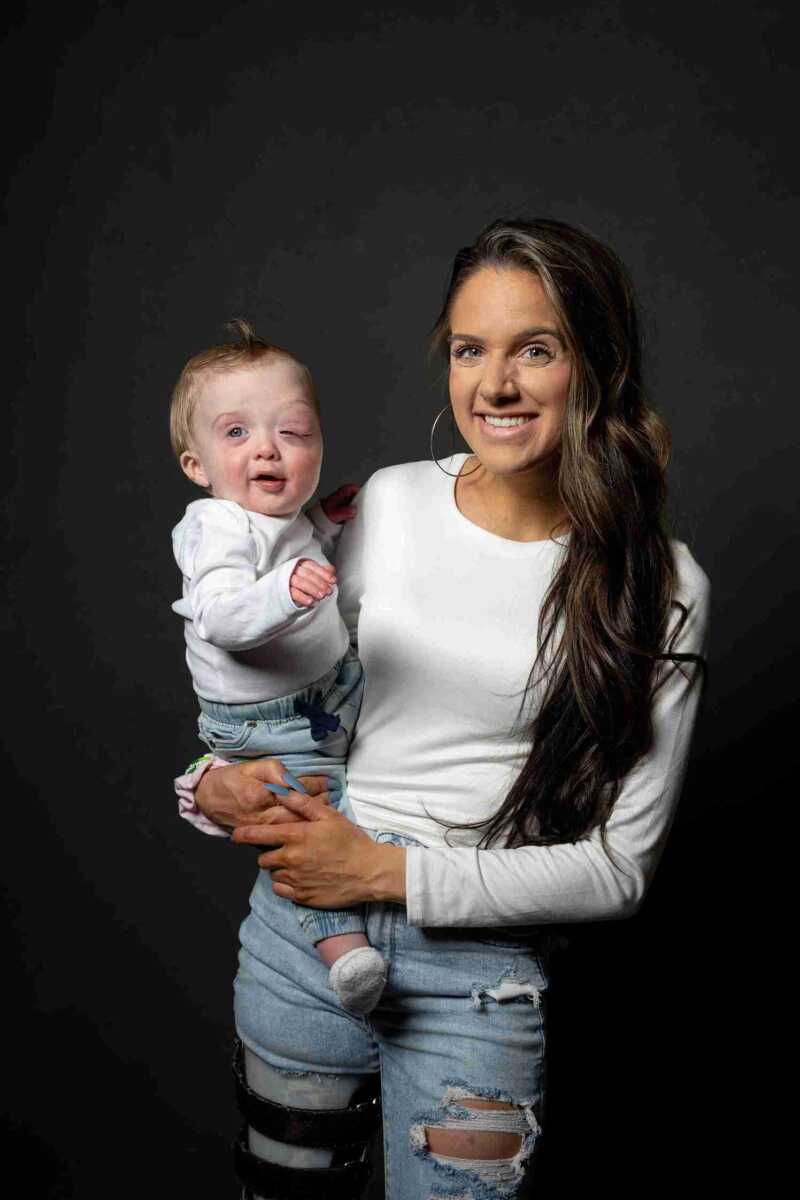
Bryson & Lindsey
“It’s important for me to make NF visible because, although I had NF and I went through my own struggles, the second I found out my son had it, my entire world changed. And it was my mission from them forward to find a cure or an effective treatment.
“NF varies among individuals so widely, which is something that I didn’t know until I had Bryson. I have NF pretty mild, I’ve had an interesting journey, but when I found out about Bryson’s diagnosis and how severe it was, I was just shocked and blown away that NF could be so severe. It varies so widely and we have to make it visible because it’s not always visible.
“I grew up with the motto, positivity, positivity, positivity. And I’m going to try to pass that along to him. I want to make NF visible, so that when he does go to school, he doesn’t face those challenges that he may face. I want everybody to know [about NF], I don’t want people to treat him any differently, because he’s not different at all. He’s perfect.”
Lindsey Marson, 28 (NF1), Bryson Johnson, 1, (NF1)
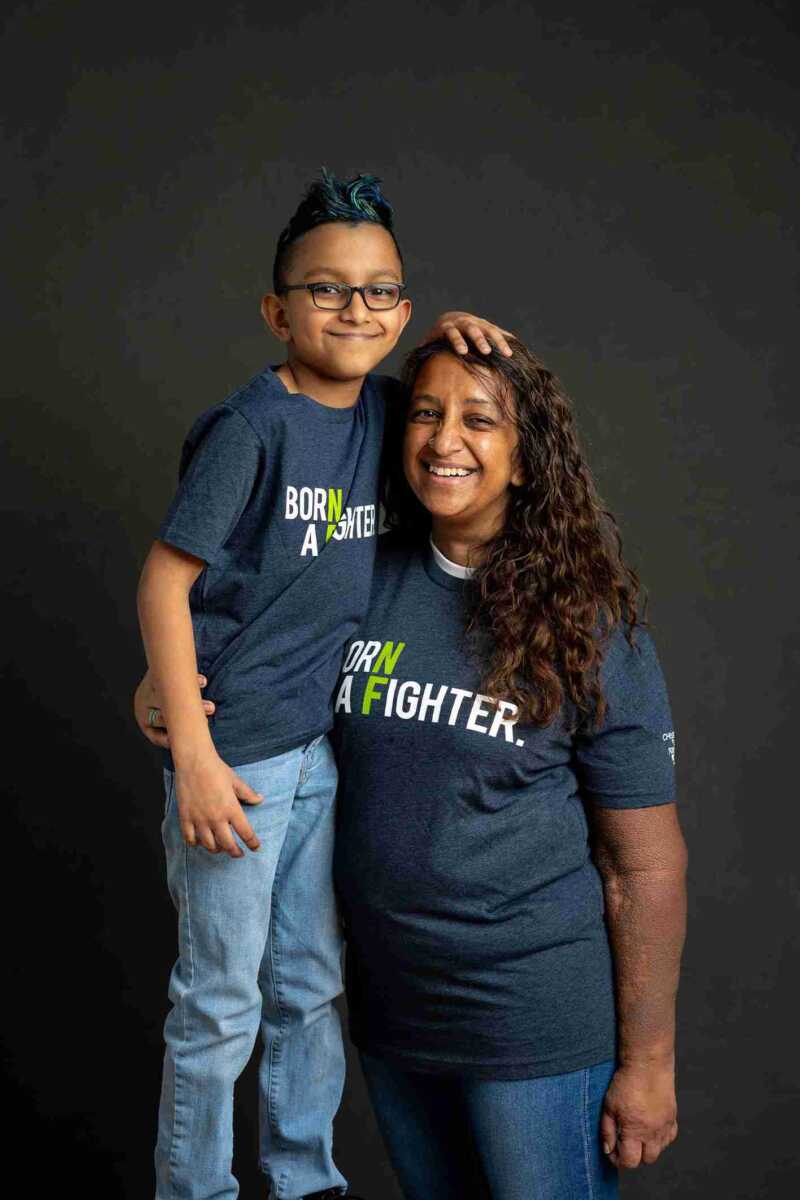
Tyler & Salina
“It is important to make NF visible because of the way it affects everyone differently. When I go to work or even my daily life with my friends, my family, they just see this person, “Oh, you’re really in pain every day?” Nobody really sees it, nobody sees it at work. They just see this person that goes to work or that goes out to have dinner or just has a smile on their face. They don’t see this person who goes in for their surgeries, the tumors, the pain – and it is pretty painful. And everybody’s story is so different.”
Salina Itwaru, 43 (NF1)
“I think it’s important to make NF visible so if people see an ad or read something about NF, they could show a scientist and then they could figure out a cure.”
Tyler Itwaru, 9 (NF1)
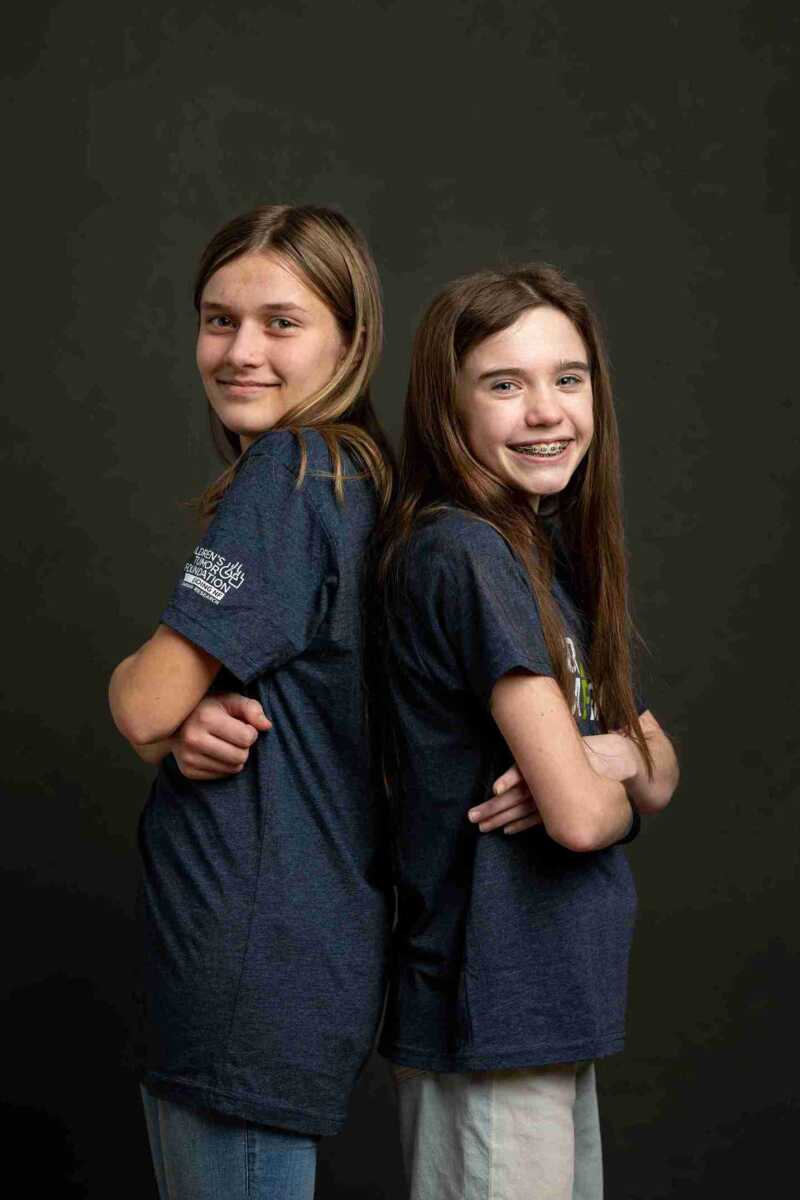
Shaelyn & Isabelle
“Making NF visible is presenting it as a part of you, not just something you have. And you show that’s who you are, not just someone who might be sick. I think it’s important to make NF visible so that someone who sees you doesn’t see you as different, but actually understands you and what you’re going through.”
Shaelyn Coverdale, 13 (NF1)
“It’s important to make NF visible to help find a cure for NF and so people will not be scared of it, so they can feel supported.”
Her 17-year-old brother Tristan added, the NF community is wonderful and supportive and so important.
Isabelle Moulsdale, 15 (NF1)
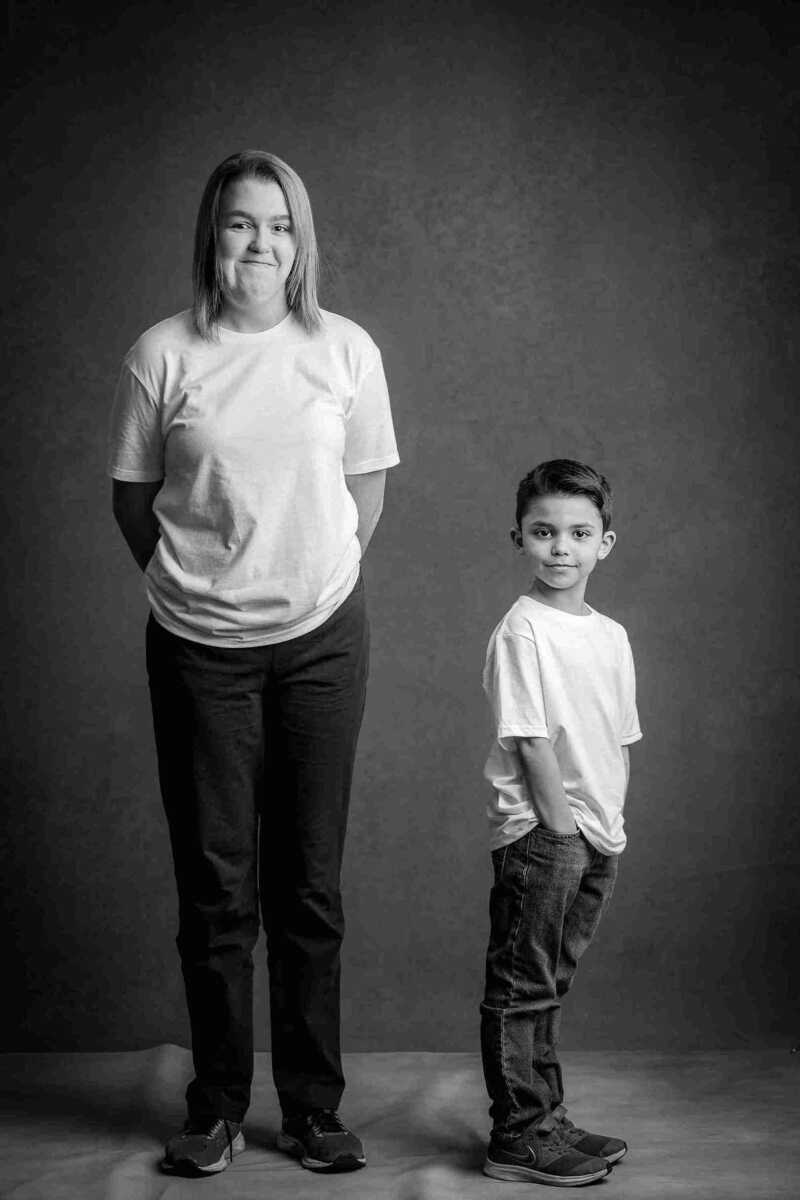
Jane and Alex
“I think it is important for people to know about NF because you don’t know what someone might be going through if they have NF and I feel it is easier to talk or comfort people if they know what I am talking about.”
Jane Constable, 13, NF1
“So people know that I am a little different.”
Alex Owens, 7 ½, NF1
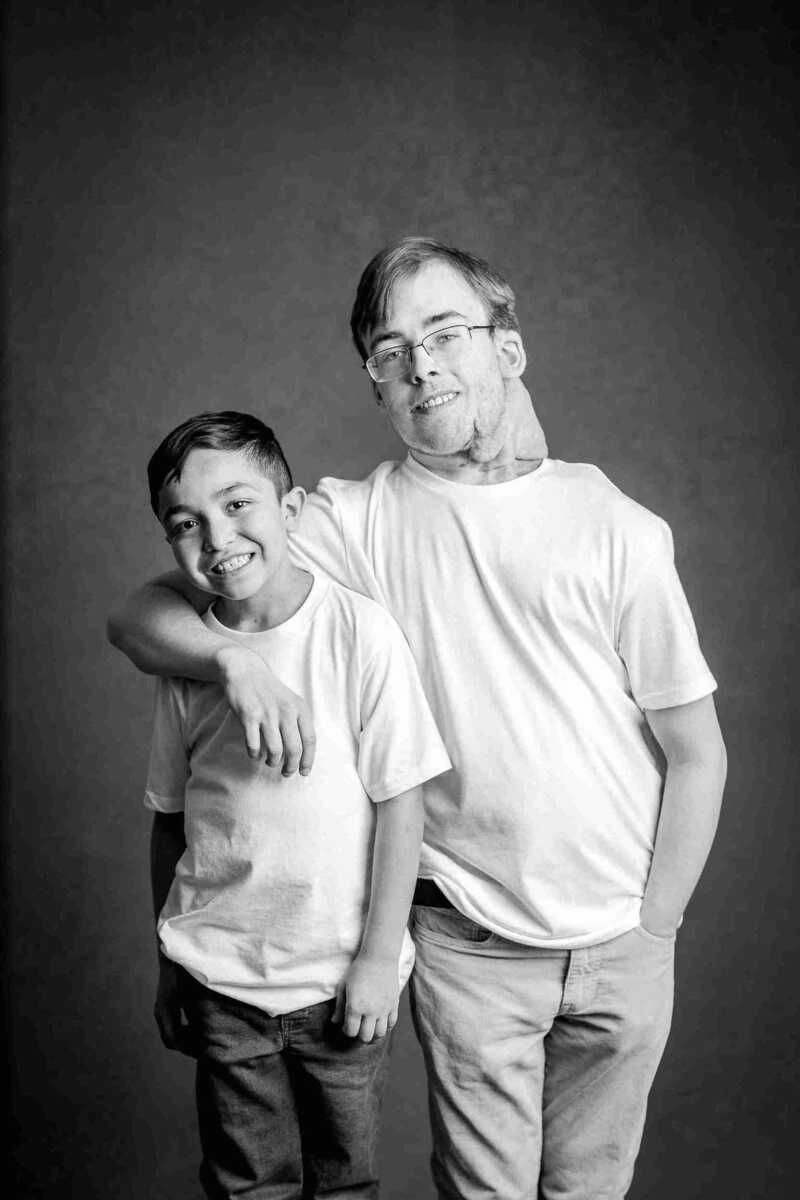
Jackson and Aidan
“It is important [to make NF visible] so people can know what NF is, and know me better. And so people know what I go through with NF.”
Jackson Decillis, almost 9, NF1
“Making NF visible will bring awareness and help people understand what they see. The more people know about NF the better. With the new drug approved this is the time to keep fighting and we need all the help we can get. We just took a massive step and if it’s visible more help will come!”
Aidan Fraser, 20, NF1
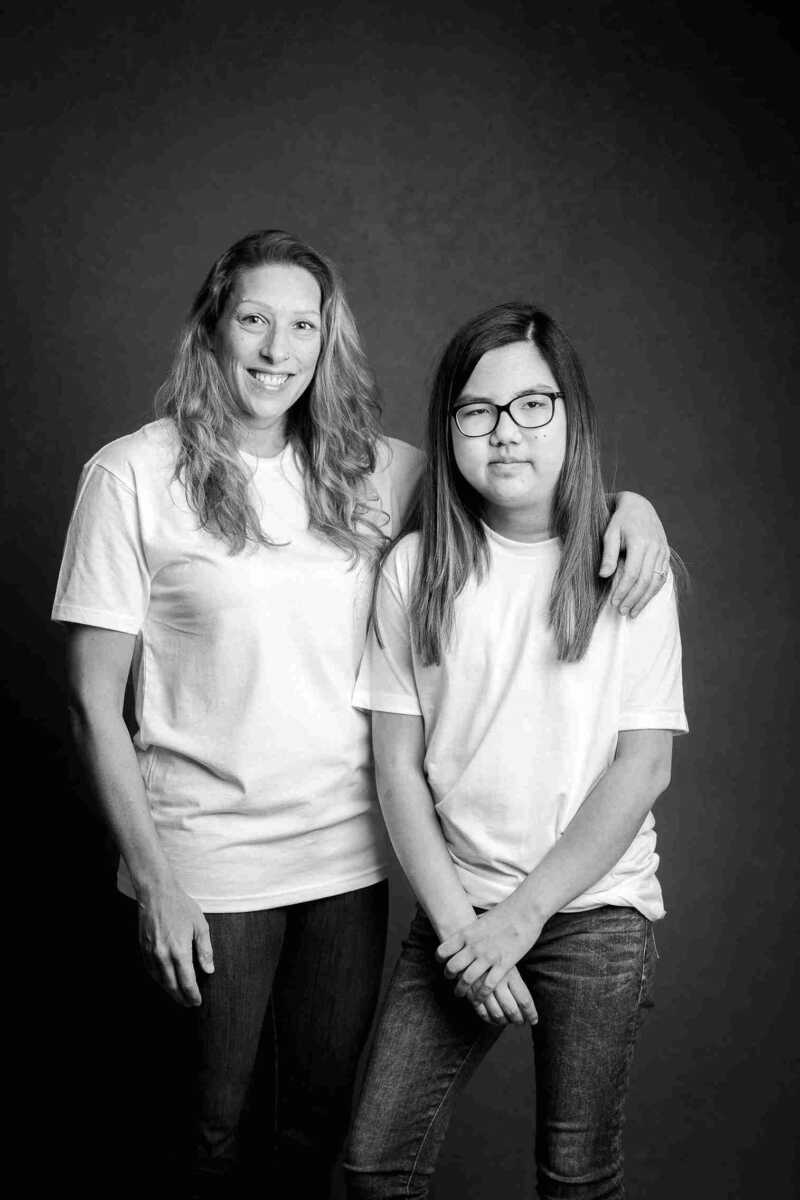
Laura and Altana
“In many, if not all, cases, NF is either a completely invisible or highly misunderstood affliction. In addition to the severe health and quality of life implications, it heavily taxes the resources (time, money, energy, physical, mental, emotional) of every person who lives with it, AND their loved ones. It is a rare disease but the circle is wide-reaching; it takes a village to manage the challenges of NF.
“There is no part of NF that doesn’t shape every moment of every patient’s life in ways big and small, and with no cure and few manageable treatments, this can dramatically alter the life experiences and opportunities of those who are in the throws of it. So many are so exceptionally strong to push through and remain positive, but, creating a wider awareness and understanding of the disease and its struggles, which run deeper than the eye can see, can lead to a more empathetic, vibrant, hopeful, and opportunity-filled world for everyone who deals with this. The more people who are aware of NF, the lighter its burden becomes, and the greater chance that this disorder can become a smaller, if not non-existent, blip on the radar.”
Laura Barbieri, 40, NF2
“It’s important to make NF visible because we need more research, education and funding to be able to help those battling all the challenges that NF can bring. I have tumors throughout my body, which sometimes cause me pain, scoliosis, social anxiety and some learning disabilities, but it can affect people in so many different ways. We need effective treatments for all types of NF.”
Altana Mukabenov, 14, NF1
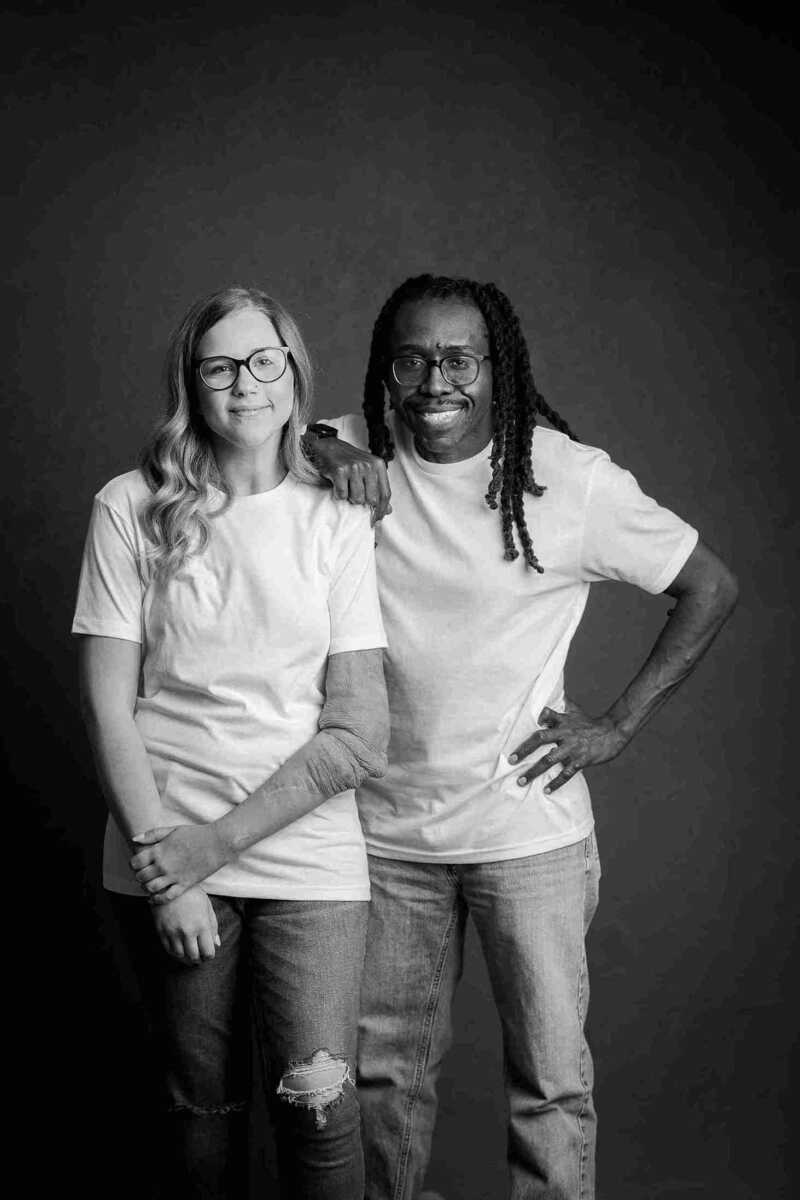
Brianna and Marcus
“There is strong importance in making NF visible, in which both people with NF and people without will benefit. Many people are unaware and uneducated when it comes to encountering people with NF. I say this because many think it is contagious. Many people even try to give out medical advice. Making NF visible will also bring awareness to the appearance of people with NF, because someone looks different doesn’t mean something is wrong with that individual. For individuals with NF, this would allow more people to become advocates and support NF. The support will then be visible in classrooms, where teachers and students (peers) are aware of the range of NF symptoms. When we make NF visible to the world, I truly believe more clinical trials will be provided to help patients with NF cope with pain, and other symptoms related to NF. Most important, it will allow everyone to see how much of a fighter people with NF are.”
Marcus Ratley, 34, NF1
“It is important that we make NF visible because individuals need to understand that although we may look different, we are still individuals with goals and aspirations. It is also important to remember that no two cases are the same, we all struggle in our different ways. And that we should all work together and lift each other up. No one should feel excluded. We will work together in order to fight for a cure.”
Brianna Worden, 22, NF1
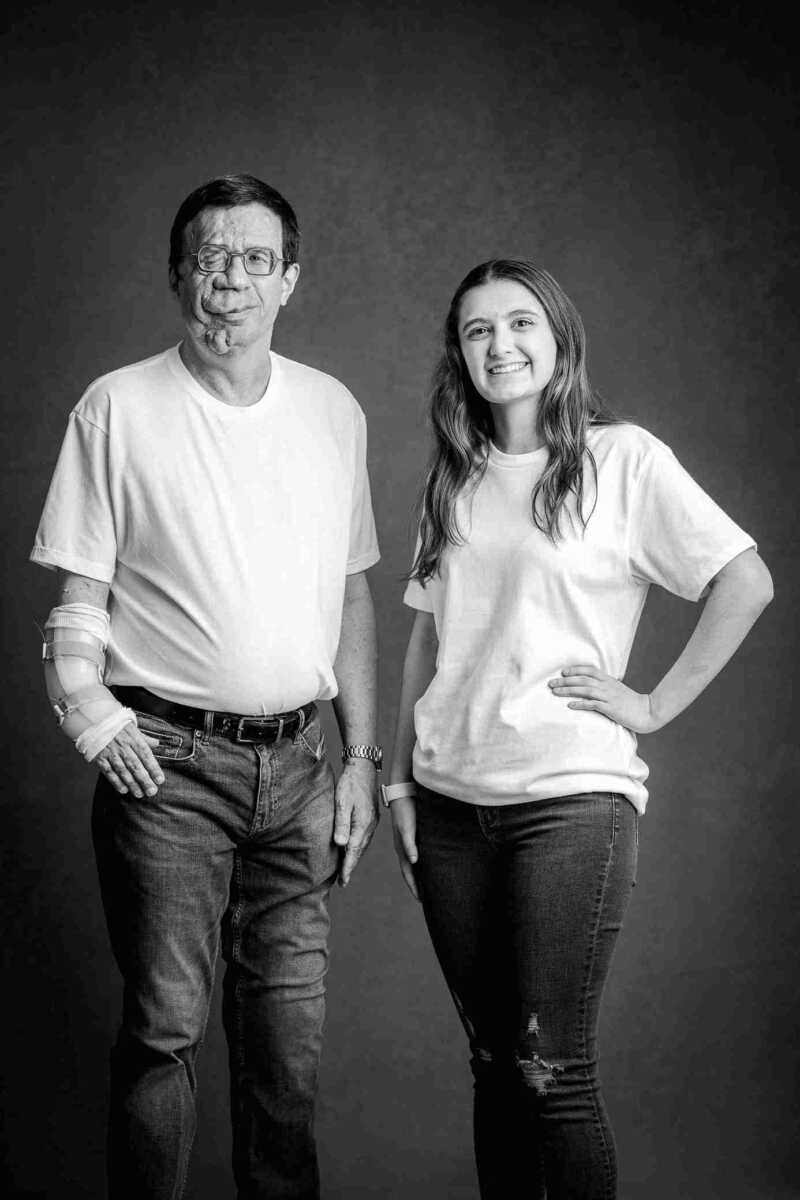
Ken and Julia
“Making NF visible means creating awareness and when we create awareness we create funding for new trials and hopefully a cure. Making NF visible means a better life for those affected, like myself. Making NF visible could be the answer to finding a cure.”
Julia Perfetti, 17, NF1
“It is extraordinarily important to make NF visible. NF is an orphan disease with a huge variation in the way it manifests itself. When strangers look at me, they know something is wrong. But that is far from true for many with NF. Persons with NF may have internal tumors, brain tumors, tumors involved with internal organs; they may be deaf; they may have learning disabilities; or they may have a wide variety of less visible problems. Continuing to make NF visible means getting researchers to work toward treatments and a cure; it means further educating clinicians; and it means helping those of us with NF feel comfortable telling our stories. Making NF more visible is one step towards Ending NF!”
Ken Rudd, 51, NF1
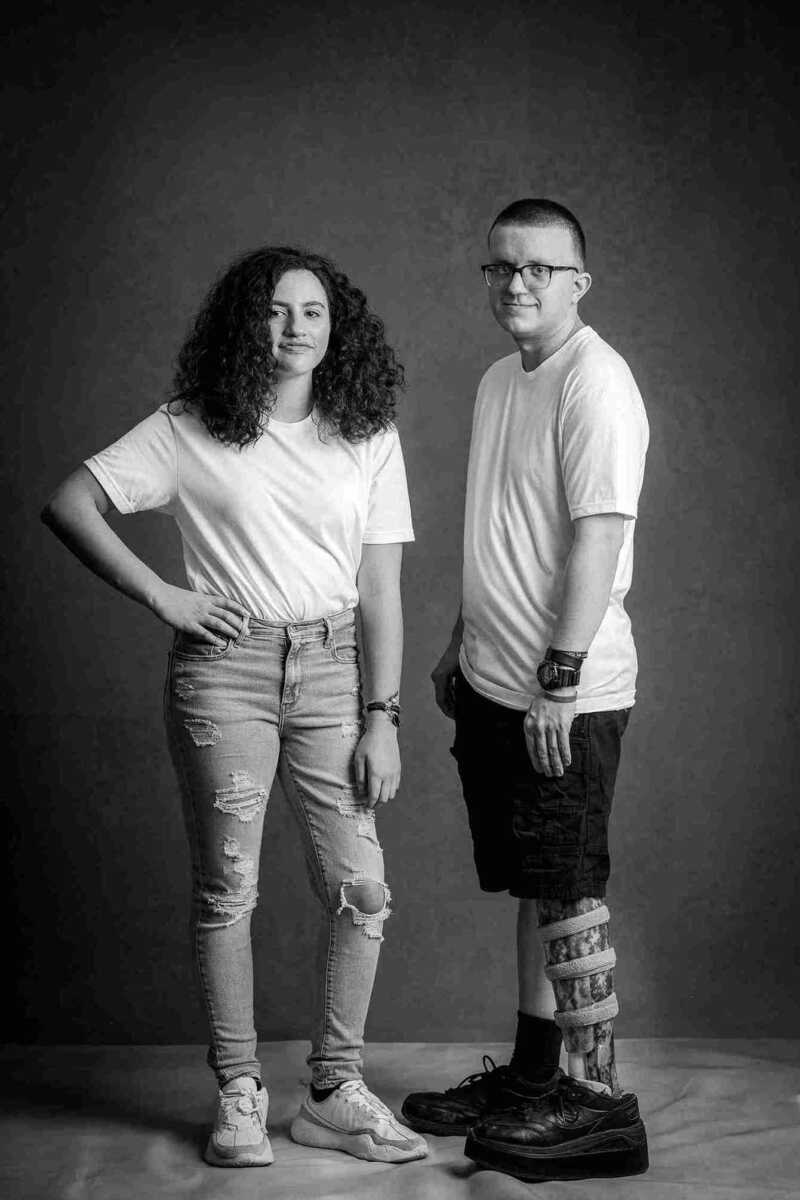
Alexandra and Daniel
“It is important to make NF visible so that all people with the disorder, whether it is obvious or not, get a voice.”
Alexandra Mora, 16, NF2
“NF is important to be visible so people can understand that it affects everyone differently inside and out.
NF is important to be visible so people see that a person can look normal on the outside but is suffering on the inside.
NF is important to be visible so people can see that in life people have problems but they still make the best of the life they have.
NF is important to be visible so people understand that NF is a struggle in a multitude of ways from having tumors throughout your body, seizures or even bowing bones.
NF is important to be visible so people can see life in a different light and see the issues that can happen in life with just a gene mutation that can dictate your whole life.”
Daniel McAvoy, 22, NF1
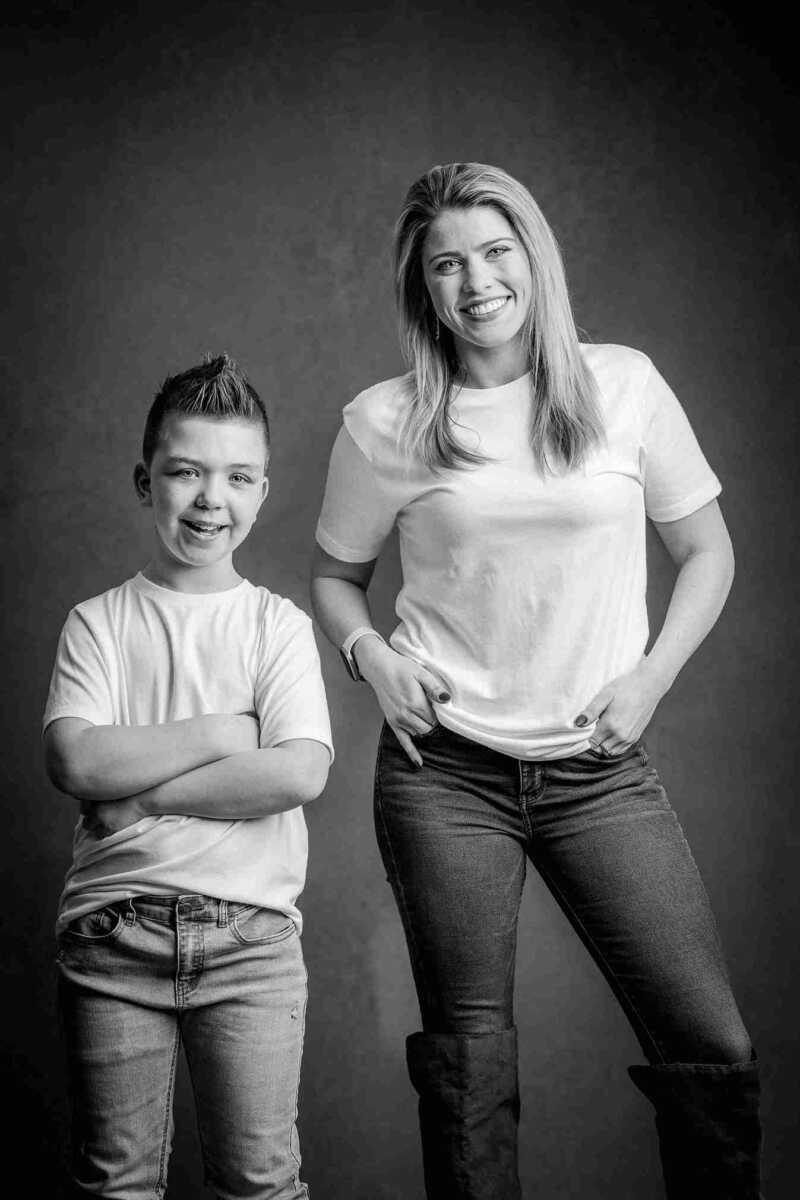
El and McKinnon
“[It is important to make NF visible] so they can help researchers to end NF.”
El Evans, 9, NF1
El’s sister also had some important thoughts on why it’s important we make NF visible.
“[It’s also important to make NF visible because] people have to learn so they are not scared of people with NF.”
Liza Evans, 5, Super Sibling
“I think it is important to make NF visible because we so often don’t see the impact of invisible illnesses. I think this relates to the epidemic going on right now that is a good reminder that the unseen is just as important as the seen. With NF patients that don’t have physical signs, they often struggle dealing with their chronic illness because others don’t understand. For example, I was on Avastin in my college classes and would go right from the hospital to the class. I would often be tired and look like I am slacking in the class and see the professor’s frustration (even though I would remind him at the beginning of class). They can’t see my illness, therefore it is harder for them to wrap their mind around. There is no putting a face to a name with invisible illnesses. This causes a lot of mental frustration for patients that go through this. I would often push myself too hard because I was often misjudged for the severity of my chronic illness and the battles that I deal with internally. The unseen is just as important as the seen.”
McKinnon Galloway, 27, NF2
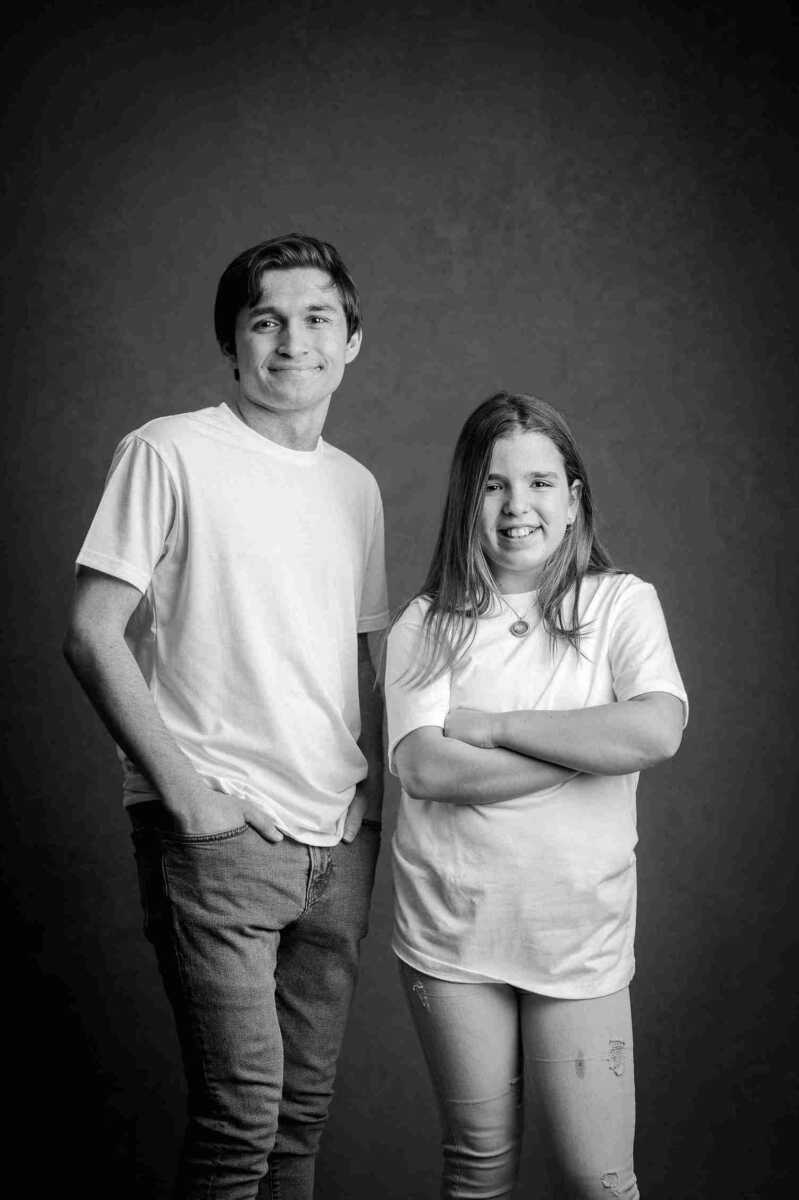
Robert and Amaya
“It’s important to make NF visible to be able to show that even if you don’t see it, it’s still going to affect people‘s families, it doesn’t just affect the person that has it. And it shows how people with an NF are capable of doing great things.”
Robert Emolo, 21, NF1
“I think that it is important to spread awareness about NF. If more people know about just how many are affected, it will cause more people to take interest in finding a cure or helping to find a cure.”
Amaya Rottloff, 10, NF1
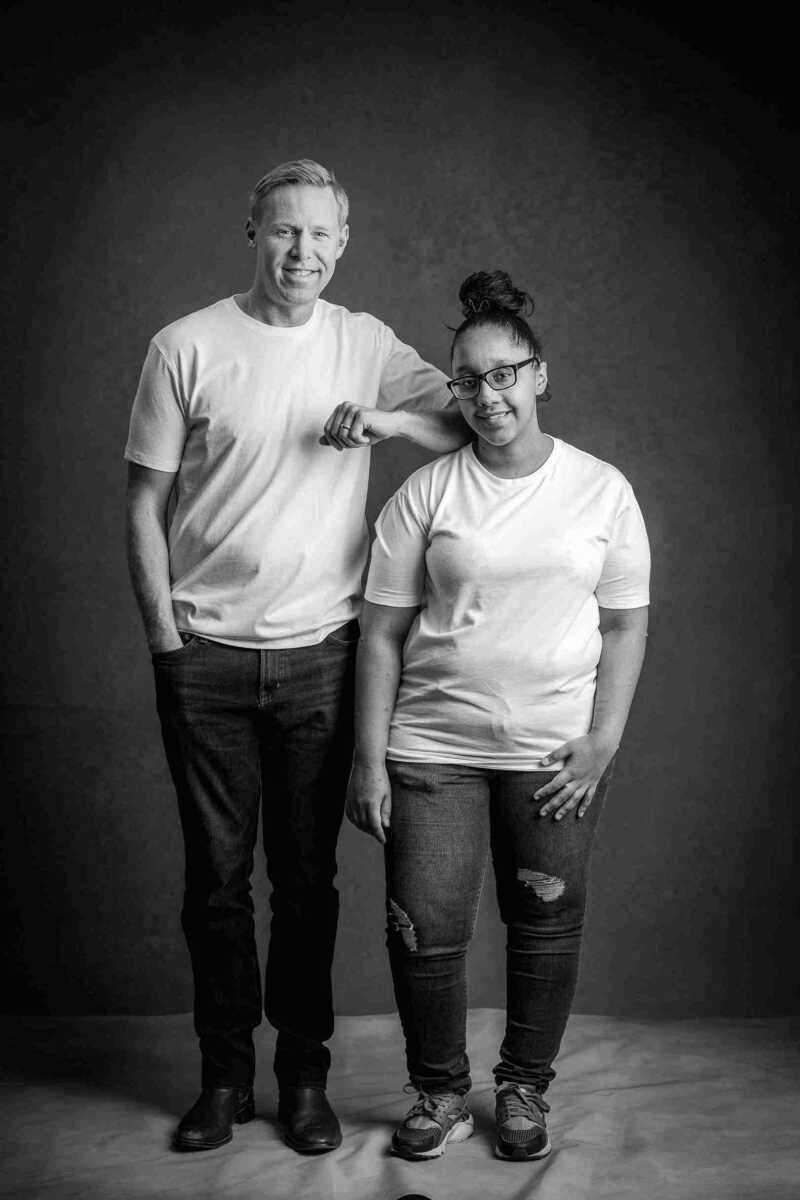
Eric and Yaniry
“I think that it’s important that we make NF visible. By making NF visible, the world will have more information and NF awareness. There will also be more donations given for NF research and clinical trials. As we let the world know about NF, the less embarrassed we will be of ourselves and showing our tumors.”
Yaniry Lora, 28, NF1
“Making NF visible is crucial to increase awareness among a broader subset of society to improve knowledge, care and funding for the condition. I had my first spinal schwannoma removed 17 years ago, and after recovery, life went on as normal for me and I had no idea that I had a condition – schwannomatosis – that was part of the broader NF family. Only after my second spinal schwannoma was removed did I expand my knowledge of the NF family of diseases and got involved with the Children’s Tumor Foundation. It is imperative that we expand awareness of NF so that we can continue the fight for a cure!”
Eric Rogers, 41, Schwannomatosis
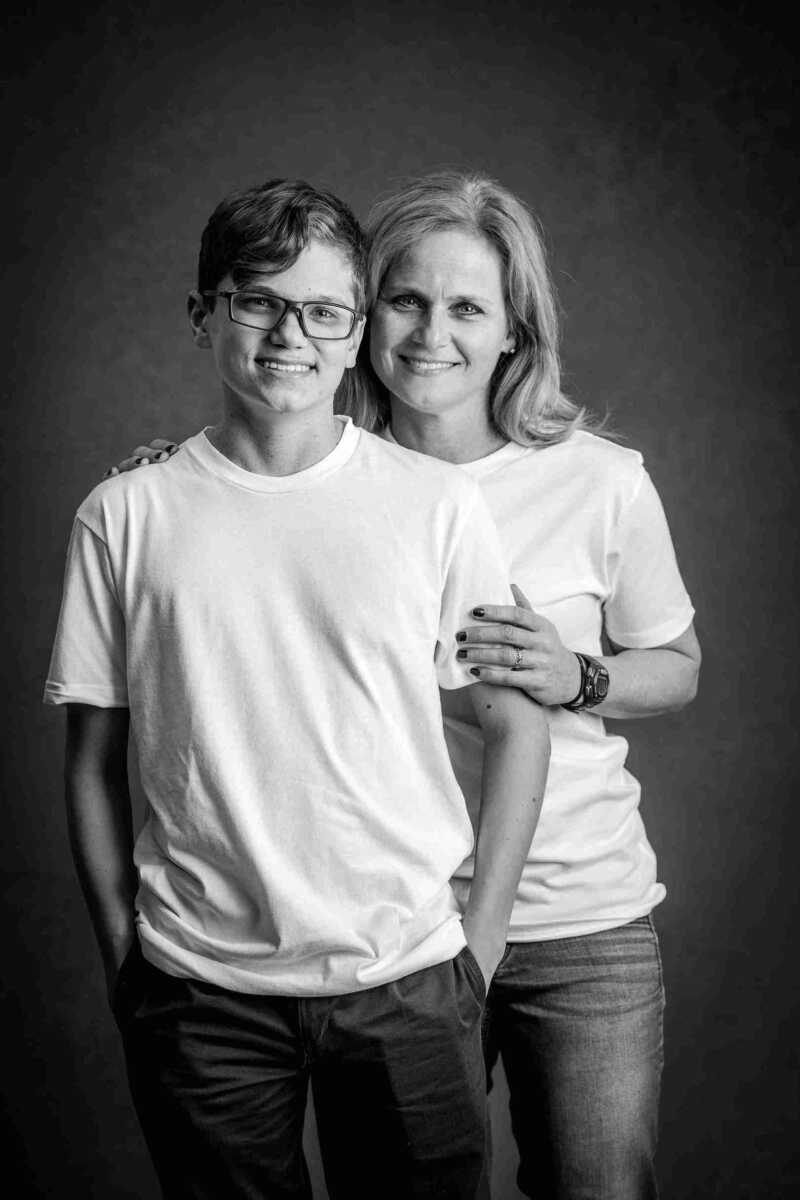
Sandy and Owen
“We both feel it’s important to make NF visible to raise awareness and attract interest from researchers to continue to conduct necessary research for better treatments for NF.”
Sandy Frenia, 50, NF1 and Owen Frenia, 15, NF1
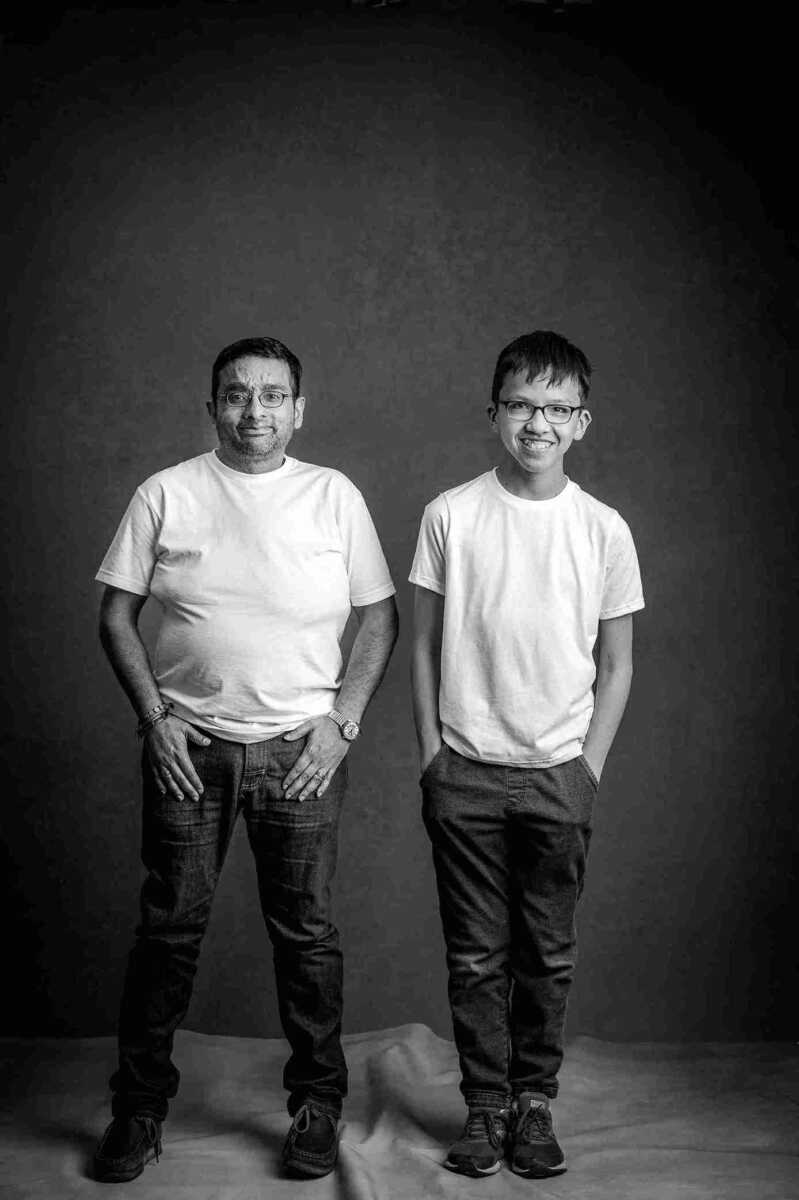
Alwyn and Aiden
“It is important to make NF visible, for every reason that I would like to make it invisible. NF has caused so much fear in my life. That fear has truly crippled me far worse than NF ever could. Making this rare disease visible empowers me to own my condition and not vice versa. It is also an invitation to our family, friends and community to join us in a great fight to end NF.”
Alwyn Dias, 44, NF1
“It is important to make NF visible right now because some people with NF have tumors and some do not, but they both have the same disease, and are very differently affected by NF. We need to make as many people aware of NF as possible.”
Aiden Warga, 13, NF1

